1972
Prefer to listen to this post?
My sightseeing companions, today’s journey takes us to a single year in film history.
It’s the year The Joy of Sex was published. The year Nixon recorded himself chatting about hiring thieves to break into an office complex. The year an American used the Sicilian Defense to open a chess game where he would defeat a Russian for the World Championship at the height of the Cold War. It was the last time humans walked on the surface of the moon. And it witnessed the last time two leap seconds were added to clocks, making it the longest year in recorded history. This is the year 1972.
Why ’72? Partially I was curious what filled the void of lesbian vampire movies after their remarkable run in 1971. But mostly it is because this is year of my birth, what some would call the ultimate horror. I wondered: what world — and what fears, specifically — were reflected in the cinema of 1972?
So what was happening? What was scaring the world in 1972? The Vietnam War continued to mire the United States even amidst a painfully slow troop withdrawal. Massacres and atrocities abounded as the public were increasingly horrified by the photojournalism coming from the front lines, including the agonizing photo of the little girl Phan Thi Kim Phuc running naked down a road after a napalm attack.
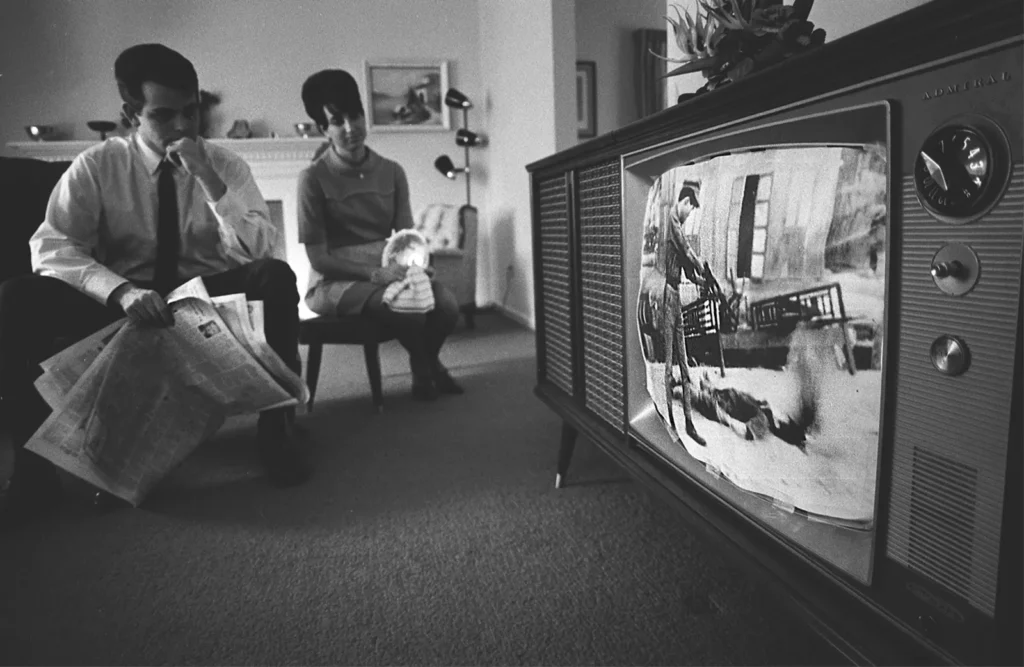
Richard Nixon, the embodiment of what he called the “silent majority” backlash against the counterculture of the 1960s, was riding high with a first-ever visit to China and the beginning of the SALT treaties in Moscow. But in June of ’72 his goons broke into the Democratic National Committee HQ, beginning the scandal that would lead to his resignation and, more importantly, the slow, ceaseless erosion of public trust in elected officials.

In Munich a terrorist attack on the Israeli Olympics team, killing 11 athletes, stunned the world. The long-debated Equal Rights Amendment which guaranteed the same rights regardless of sex finally passed Congress, but would never achieve the ratification by 38 states needed. We’re still waiting.
Meanwhile the world was slowly awakening to the horrors modern life and industrialization were inflicting on the environment. The UN Stockholm Conference was the first to recognize environment protection as a global priority. In response to high-profile events like the Cuyahoga River spontaneously igniting and chemical levels in Lake Erie high enough to develop photographic film, the US passed the Clean Water Act.
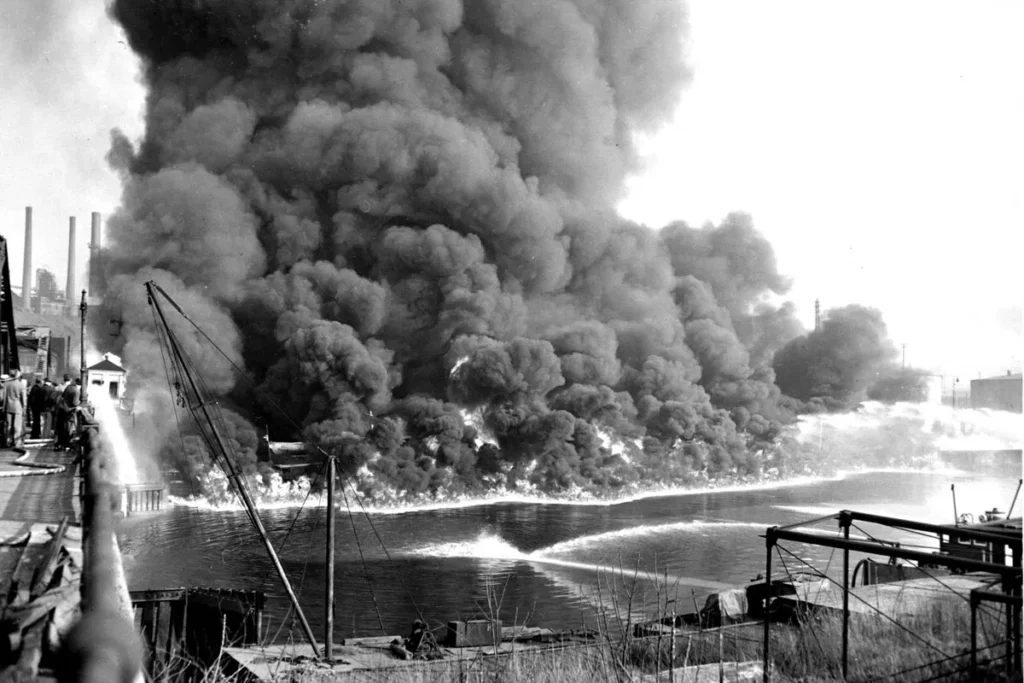
And of course the Cold War still raged, despite halting efforts at detente. At least since the Cuban Missile Crisis a decade earlier the world had lived under the ever-present threat and existential anxiety of total planetary annihilation.
Unsurprisingly, the 1970s were a golden age for frights on the big screen. The VCR era was about a decade away, so if you wanted to be scared by the latest movies had to sit your butt in a theater. And often those theaters were dingey, raucous grindhouses showing double and triple features of just about anything a filmmaker could produce.
1972 witnessed the height of giallo, what we thought was the end of Herschell Gordon Lewis, the debut of Wes Craven, the birth of blaxploitation, and a fulsome shift from the gothic frights of the 1960s to a much grittier, visceral, bloody mess-type horror. Let’s have a stroll through a few films I’ve seen that characterize this year.
Sidenote: There’s almost no through-line in the films I’m about to tell you about, except possibly the way they were processed and colorized. Rich warm colors, hazy edges — what has been called “the tattered comfort of a worn family leather couch”.

Of course this is not a comprehensive list of what is popularly considered the Best of 1972. Just some stops on my own personal itinerary I’d like to tell you about.
1972 was the year that Lucio Fulci went full-gore with Non si sevizia un paperino, known in English as Don’t Torture a Duckling. Fulci here takes on folk superstition in my family’s dusty ancestral homeland of Basilicata. But the witchcraft here is a red herring. It’s a corrupt, sexually perverse Catholicism at the root of this horror. Catholicism as the bogeyman is a theme that would be well-explored later in the 70s. The slashing killer as the punisher of sinful behavior replaces god in many ways. And Catholic ritual itself becomes the setting for masterpieces like The Exorcist in 1973 and The Omen in 1976. Fulci didn’t start the anti-Catholic theme in horror but he certainly propelled it forward in Don’t Torture a Duckling.
Speaking of replacing deities, 1972 also gave us the first cinematic treatment of the venerable comic Tales from the Crypt (full movie at link below). Here the cryptkeeper is a sort of ghoul of Christmas past (literally in the case of the first segment). The crypt that five tourists have stumbled into turns out to be a waiting room before being sent to hell for their misdeeds. It’s five separate tales unfold about people being horrible and getting their comeuppance: murder of a spouse, infidelity, bullying a neighbor to suicide, neglecting nursing home patients, and the like. This is a much better movie than I thought it would be — and true to the kind of shock and final-panel climax so key to the comic books.
Tourists, you may think rape-revenge films started in 1978 with I Spit on Your Grave, but you’ll have to back up six years to Wes Craven’s first film The Last House On The Left. This film, which would launch the career of producer Sean Cunningham of Friday the 13th fame, tells the story of a pair of friends heading to a concert who encounter a group of escaped inmates. There’s rape, torture, and murder. It’s not easy to watch. But the innovation — if it can be called that — is what happens when the group heads to the last house on the left, home of one of the victims. There they encounter her parents who after initially offering hospitality come to understand they are hosting murderers. Thus begins the revenge portion of the film, really only the very last act — but it is uncharacteristically gory (a bitten-off penis, an electrocution, throat-slitting, chainsaws) for the time. If you remember the foundational moment driving Freddy Kruger in A Nightmare on Elm Street 12 years later — parents hell-bent on revenge who murder him grotesquely — you can see Craven beginning that exploration here.
Were American audiences numbed to onscreen violence and images of depravity coming nightly from Vietnam? Possibly, though contemporary reports of audience reactions to Last House On The Left certainly mention traumatized audiences and even theaters which would not show the film. A more likely explanation comes from Craven himself who felt that popular films of the era, such as Westerns, tended to glamorize violence — a misleading representation of death in the wake of the Vietnam War.
For something completely different we have Sisters, early Brian DePalma, starring a truly phenomenal Margot Kidder. While it is at once an obvious homage to Alfred Hitchcock thrillers, complete with inventive camera angles and split screens, it is also a remarkably forward-thinking commentary on women’s liberation and autonomy. You’ll have to trust me on that, because I can only give a partial plot here so as not to ruin the twist I certainly did not see coming. Kidder plays Danielle, an aspiring actress living in Staten Island, who murders a one-night-stand in her apartment after she fails to take a mysterious red pill. A neighbor named Grace witnesses the man’s dying moments through her rear window and sets off to determine what happened. Suffice to say that there is a twin in this mix, a sister, but it probably is not in the way you might imagine. I’ll note only the film’s marketing tagline: “What the Devil hath joined together let no man cut asunder!” This movie is what happens when you let men literally shape a woman’s body. Roe v. Wade was only one year away.
Tourists, we’re at the end of a short jaunt that will reward much lengthier journeys, should you desire. Want an extended itinerary? Here are a few more films that defined 1972:
- The Night Stalker
- What Have You Done to Solange?
- Frogs
- Images
- Asylum
- Your Vice Is a Locked Room and Only I Have the Key
- Horror Express
- Grave of the Vampire
- Night of the Full Dark Moon
- Blacula
- Private Parts
- All The Colors Of The Dark
- The Red Queen Kills Seven Times
- Tombs of the Blind Dead
1972 was no conspicuous demarcation in horror filmmaking — you might give that description to 1973 or 1978 — but in spending some time here it’s clear that, as ever, horror is a particularly insightful lens through which to perceive history.
That’s it for this week, travelers. Maybe we’ll tackle another year at some point. If you have a favorite year, please call our hotline. Until then, I am ever your faithful Terror Tour Guide.
A full list of the movies mentioned above can be found at Letterboxd. Find out where to watch there.
The Terror Tourist is my occasional segment on the Heavy Leather Horror Show, a weekly podcast about all things horror out of Salem, Massachusetts. These segments are also available as an email newsletter. Sign up here, if interested. Here’s the episode containing “1972”:
Descent to Xibalba
Prefer to listen to this post?
Travelers, today we journey to Middle America. No, not the middle America of small towns, wingnut politics, and climate denialism (though that’s a frightful destination we really should visit someday). I refer here to the original middle America which historians refer to as Mesoamerica, the collection of cultures inhabiting the southernmost part of North America, the Yucatan peninsula, and the Pacific coast of Central America from almost 2000 BCE up until Spanish greed fucked it all up in 1519. The descendants of the these ancient cultures number around 7 million today in a mostly Westernized Mexico and Central America lucky to have them.

Why go here, you ask? Because the cultures of Mesoamerica were absolutely rad, that’s why. You like chocolate? Of course you do. Thank the Mayan civilization. Hey you texting on your phone and not paying attention to this tour, clearly you enjoy systems of writing. Thank the Olmec civilization. Wish someone would invent universal education for every member of society in the Americas? Someone did. Thank the Aztec civilization.
But this isn’t a history podcast. It’s a horror show. And boy howdy do we get some horror from Mesoamerica. We’ll start our journey in Mayan hell and work our way up to the light. Welcome to today’s itinerary of the Terror Tourist: Descent to Xibalba.
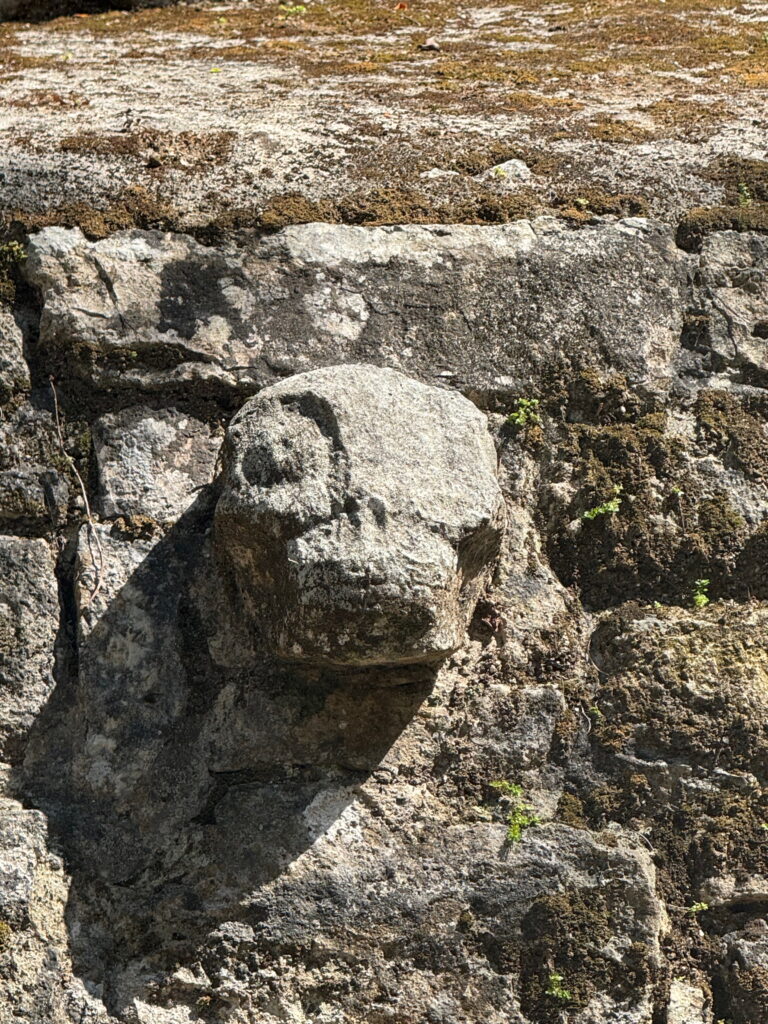
So it was that the lords of Xibalba, One Death and Seven Death, heard the ruckus and said: ‘What’s happening up there on the surface of the earth? All that stomping and shouting? It is time to summon them to come play ball down here, so that we might defeat them.’
This line comes from the Popol Vuh, the foundational creation myth of the Mayan civilization. Long story short: the twin human brothers Hun Hunahpu and Vucub Hunahpu are in fact summoned by the lords of the Mayan underworld and put through horrific tests and trials. These include a river filled with scorpions, a river filled with blood, and a river filled with pus. Once past these nasty waterways, visitors the boys are challenged to survive the homes of possibly the least desirable neighborhood imaginable: Dark House, Cold House, Rattling House, Jaguar House, Bat House, Razor House, and Hot House. Xibalba also had a ball court. Which is a nice touch.
Hun Hunahpu and Vucub Hunaphu make it through these trials, but they are murdered anyway. Hun Hunahpu’s decapitated head is put in a calabash tree. Still able to speak, the head spits on a passing woman, Blood Moon, daughter of the demon Blood Gatherer, impregnating her. She comes to the surface of the world and gives birth to twins as well — Hunahpu and Xbalanque — who, when grown, descend to Xibalba to avenge their father and uncle, defeating the lords of the underworld in a Mayan ballgame, ironically the same game whose ruckus caught the attention of the demons in the first place. Hunaphu and Xbalanque are transformed into the moon and the sun. Thus begins the Mayan cosmogony. Lotta body fluids, lotta houses out of a Saw movie.

As with so many ancient belief systems, bloodletting was central to rituals surrounding legitimization of rule and cultural order. Metallurgy itself came very late to Mayan civilization, so blood was drawn using implements made of obsidian, stingray spines, or shark’s teeth. In elaborate public rituals atop pyramids the ruling elite would pierce their tongues, buttocks, and penises. The spilling blood was collected and then burned as an offering to the gods. Often this act was accompanied by ritual sacrifice, actual murder, the ultimate offering to the gods. Victims here were almost always high-status prisoners of war. The methods of their deaths, gruesome to most modern sensibilities, were tied tightly to worldmaking legends.
For example in decapitation — the “highest” form of sacrifice — the twins’ stories from the Popol Vuh would be echoed, which is why decapitations were often accompanied by a ballgame. Removal of a still-beating heart by pulling it straight out of a victim’s chest, the most common sacrifice, made absolutely clear the centrality of blood to Mesoamerican beliefs about rebirth. After smearing himself with the blood of the removed heart the priest-turned-cardiac-surgeon would shove the fresh corpse down the pyramid steps where its skin would be removed and worn as part of a dance of new life. If the victim were especially notable his innards would be portioned out and eaten.
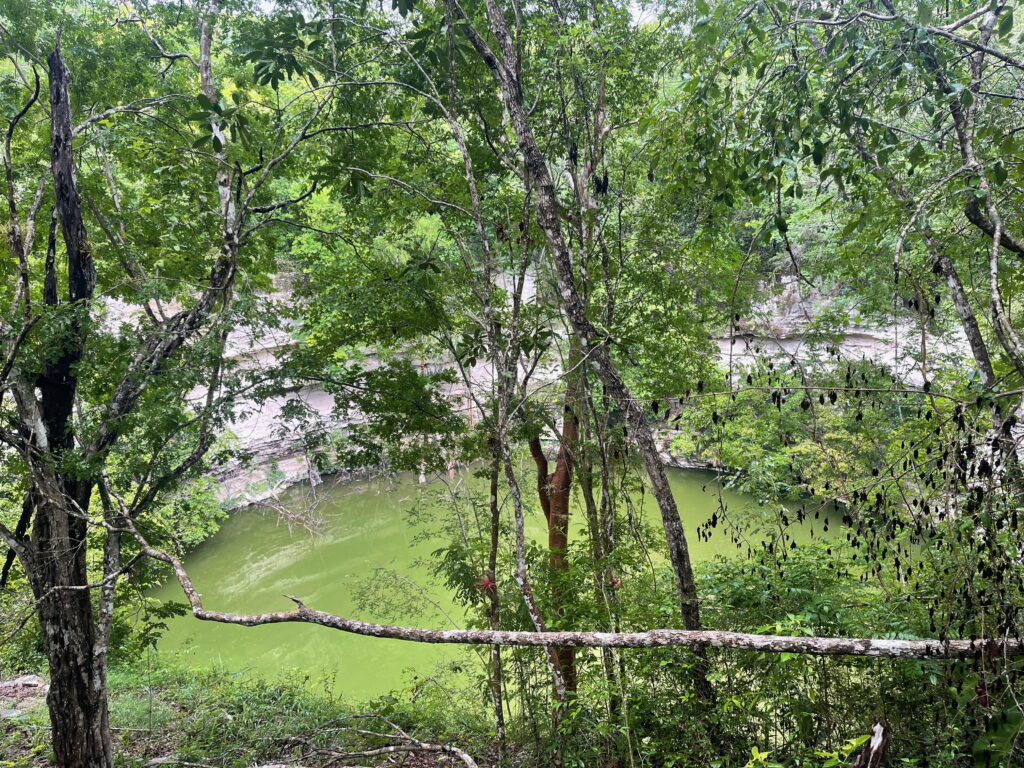
Often sacrifice was less bloody, if no less impactful. At Chichén Itzá in the Yucatán, during times of drought sacrificial victims were often tossed into the Sacred Cenote, a freshwater sinkhole, whose sheer sides meant no escape. This has been confirmed by the hundreds of skeletons excavated at the bottom of the cenote. There was also live entombment, immolation, cannibalism and, perhaps the ultimate literalization of their creation myth, binding a victim into a tight ball for ritual reenactment of the Twins’ ballgame.
In recent history the Mayans in particular have been associated with the end of the world (subject of a previous installment of The Terror Tourist). This supposed apocalypse was due to arrive on December 21, 2012 and was commemorated among other places in Roland Emmerich’s over-the-top cataclysm porn 2012. But the connection to the Mayan calendar was based on a misunderstanding. Mayan calendrics is incredibly complicated; dates are derived from two interlocking counting schemes, one linear and one cyclical, called the Long Count and the Calendar Round. The Long Count itself was divided into ages of 13 b’ak’tuns, roughly 5,125 years long. Historians backdating to a known zero date for our current age yielded the end of the 13th b’ak’tun as December 21, 2012. Thing is, the Mayans never said the world would end on this date, merely restart in a new age. Indeed almost everything about Mayan calendrics is historical rather than prophetic. They lived in the now. But hey, it was 2012 and we were twelve years overdue for a baseless global end-of-the-world panic.
The real horror of Mesoamerica, alas, was not penis-slicing or skin-wearing or even were-jaguars. (Were-jaguars, yeah!) It was the destruction of these venerable ancient cultures by European colonizers. Starting in the early 16th century, continuing to the capture of the Aztec capital in 1519 and through to the fall of the last independent Mayan kingdom in 1697, this conquest was as much a result of war waged by the Spaniards as by the diseases they brought with them, for which indigenous peoples of the Americas had no immunity. Worse still, we have inherited comparatively little written record of these very literate societies due to the systematic destruction of their records by Christian missionaries. Only four Mayan codexes survived the Spanish flames. True Mesoamerican horror.

This relative lack of material — and the fact that Mayan hieroglyphs were not effectively decoded until the 1970s — didn’t stop Hollywood, though! In fact, it may have helped movie scriptwriters eager to fill the void of received knowledge. Can’t read the glyphs carved on that pyramid? No problem, we’ll just make something up! Let’s go to the movies, travelers.
Right at the outset we have to admit that almost all of the films noted here are prime examples of Mexploitation. Low-budget, sensational, sometimes overtly racist, with a scant if not comical understanding of actual history, these films take bits and pieces of Mesoamerican lore when useful (or more often when in synch with the current desires of the movie-going public). But they sure are fun!
Take for example, The Curse of the Aztec Mummy, maybe from 1957, maybe from 1961. It depends on how you date it and what you consider the actual movie as this has the same cast and storyline as The Aztec Mummy (sorta like Evil Dead and Evil Dead 2). Both films involve a group of scientists searching for an ancient Aztec tomb containing a mummy guarding a mythical breastplate. The mummy of course reanimates, but the real villain here is a scientific rival masquerading Lucha Libre-like known as The Bat. This is a fun watch, especially to see some of the earliest Mesoamerican tropes in film, but beware falling into this hole too deeply. There are multiple films, knock-offs, and re-cuts: The Robot vs. The Aztec Mummy (1958), The Wrestling Women vs. The Aztec Women (1964), Attack of the Mayan Mummy (re-cut of the original Aztec Mummy because, you know, Aztecs, Mayans, all the same).
Q: The Winged Serpent is exceptional monster horror from 1982. Look, if all I told you about this movie is that it involves Quetzalcoatl, the giant winged reptile, nesting inside the latticework spire of New York City’s Chrysler Building, you’d stop this podcast immediately and go watch it, right? This Larry Cohen masterpiece has all of the grit of filming permit-free in 1980’s New York. It follows a street-level crook who accidentally discovers Quetzalcoatl’s nest and then extorts the city for directions to it. You should watch this film. Also, why has no one made a sequel to this? The egg is sitting right there.
Then there’s The Laughing Dead from 1989. You’re gonna have to find this one on your own online (if you know what I mean), though there is a Vinegar Syndrome Blu-Ray available. What I saw, ironically, was a Spanish-captioned rip. Anyhoo, this one is basically incomprehensible, though the plot is basically the same as 70% of Mexploitation films: “A ragtag group of people go on an archaeological trip to Mexico to visit Mayan ruins, but get more than they bargained for, when they encounter a zealous group of Mexicans attempting to revive a deadly ancient ritual of their ancestors.” Students of Mesoamerican history will appreciate the nod to decapitation and ballgames as one victim’s head is sliced straight into a basketball hoop.
The Ruins from 2008 actually has nothing to do with ancient cultures except that it is set on top of a ruined Mayan temple — and even this was not in the original book. This is vegetative horror — basically Alien except for gardening, “The Lonesome Death of Jordy Verrill” from the original Creepshow, except as a hangout movie. It’s actually a fun watch and there are some great deleted scenes and a much darker, alternate ending on YouTube. Have a watch of this one, tourists.
Squeaky actually watched and discussed Maya from 1989 recently. This is basically the same plot as The Laughing Dead with a Texas Chainsaw vibe. At least The Laughing Dead felt Mexican. This one exudes Texas. Like, why are there so many Americans running around? It’s worth a watch though for the final act which involves a Day of the Dead celebration (thoroughly Christian, but whatever) whose goal is to resurrect King Xibalba. Lots of nudity, lots of senseless gross-outs (like a guy vomiting small green snakes). I recommend.
Some optional itineraries for those who’d like to travel further:
- The Old Ways
- The Dead One
- La Llorona (2019 from Guatemala, directed by Jayro Bustamante) — not to be confused with the James Wan’s The Curse of La Llorona or the Danny Trejo The Legend of La Llorona
- Curse of the Mayans
- Curse of the Maya
- México Bárbaro
- Dolly Dearest
The truth is, there are not many exceptional Mesoamerican horror films. It just hasn’t had its day like Egyptian horror. This is in contrast to Mesoamerican horror literature, a truly thriving sub-genre. So, aspiring horror scriptwriters and directors, this material is ready for you. What are you waiting for? Make the sacrifice!
That’s it for today’s journey, my touring pals. Time to relax, maybe avoid ball courts, and put on a good movie. Until next time!
A full list of the movies mentioned above can be found at Letterboxd. Find out where to watch there.
The Terror Tourist is my occasional segment on the Heavy Leather Horror Show, a weekly podcast about all things horror out of Salem, Massachusetts. These segments are also available as an email newsletter. Sign up here, if interested. Here’s the episode containing “Descent to Xibalba”:
No Kings

High resolution printable version available here.
A Trip Down Witch Lane
Prefer to listen to this post?
Good evening, fellow travelers! Dust off those walking shoes or mount your beast of burden because on this journey we’re traveling down a single road. It’s a relatively lengthy one, though, and it has many ups and downs, twists and turns. Today we are taking a trip down Witch Lane.
Like all good excursions this one may say as much about the tour guide as it does the locale. You see, in a few days my wife and I will own a home on a road called Witch Lane located in the Norwalk, Connecticut village of Rowayton. This is not in itself all that novel. There are dozens of place names on the east coast named for witches: Witch Path in West Springfield, MA; Witchtrot Road in South Berwick, ME; Witchduck Road in Virginia Beach, Virginia, Witches’ Rock Road in Bristol, CT, and so on.
It is also, of course, coincidence that I am about to live on Witch Lane and I am a member of the number one horror podcast out of Salem, Massachusetts, a town globally known for its association with accusations of witchcraft. Or is it a coincidence? Let’s explore.
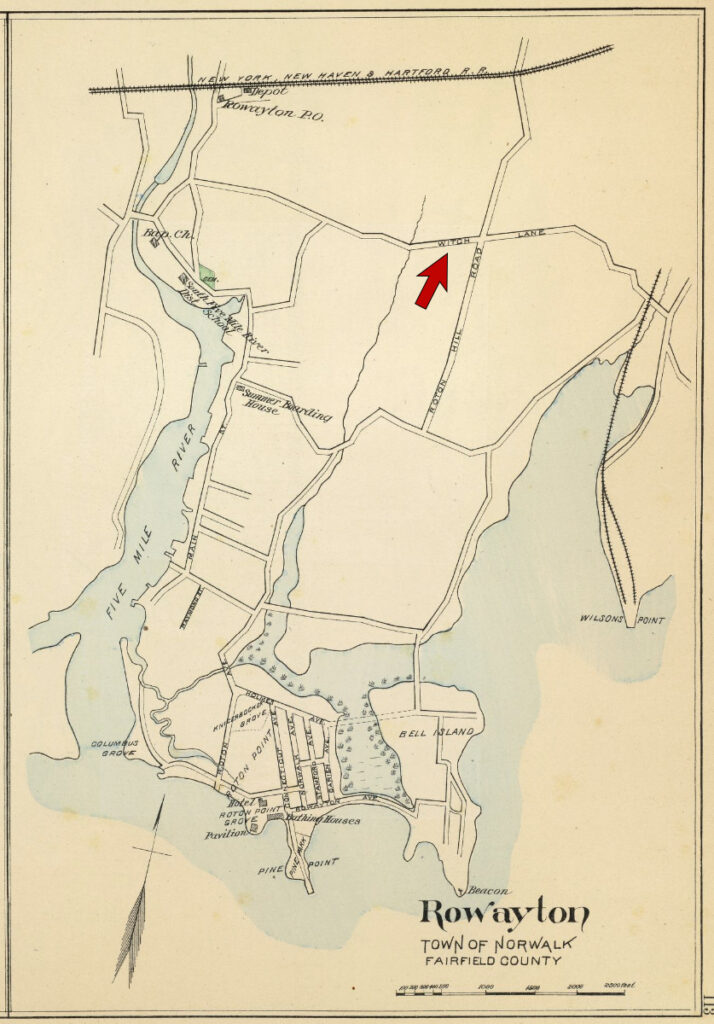
I like to know a bit about the places that I live, so, being a naive new transplant to the region, one of my first educational stops was the local historical society. Run out of one of the oldest and arguably most scenic old homes on the Rowayton waterfront, the historic association is the keeper of archives, photos, artifacts and memorabilia of this coastal community. I knocked on the door and was greeted by a group of older ladies, most of whom were holding brooms. This is not a joke, travelers, for it was spring cleaning day at the historical society. I explained that I was new in town, about to move to Witch Lane, and that I was curious about the place name etymology. (Word nerd sidebar. There is a term for place name etymology: toponymy.)
Surely these ladies would know something about a lane named Witch in a town full of roads and parks named mostly after Native Americans and prominent early settlers. But no. “No one knows,” they said, straight-faced. I could not believe this. And they added that no one seems to know why there’s a small forested area called Devils Garden either. I said “Witch Lane literally becomes Hunt Street a little way down from our house. Can this possibly be unrelated to, you know, witch hunts?” Blank stares from the ladies. As it happened the former town fire marshal was in the building at the time so I asked him too. Nope, nothing, no idea. Now, I understand that not everyone is as interested in the bizarre and the horrific as I am, but shouldn’t a historical society at least have an inkling about a place name like Witch Lane, especially in a state still reckoning with its legacy of witch accusations?
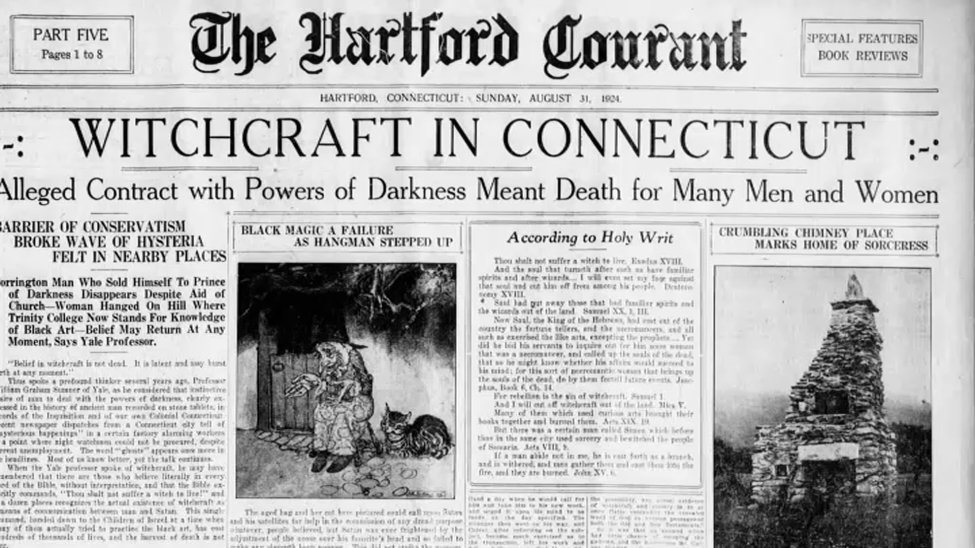
And then I had a thought: maybe feigning ignorance is precisely what a group of broom-wielding ladies (dare I say, a coven) would do. They are entrusted with safeguarding the village lore. Maybe they don’t just willingly give that information to an outsider who comes knocking. Or maybe they knew I would come asking, which is why the fire marshal was there. You see, the home we are about to move into is not the original house on the lot. The former building there burnt to the ground in 2014. I had contacted the current fire marshal to inquire about this and his response was that the cause of the fire was never determined but that it consumed the entire structure and caused no loss of life. The owners, however, did not stay. Could it also be coincidence that the former fire marshal was also in the room when I stopped in? Perhaps they had a plan all along to deal with me, the nosey newcomer.
Now, if this sounds like the plot of one of the many films we’ve reviewed on the Heavy Leather Horror Show you would not be wrong. And this would be the part of the movie — almost a cliche in much of horror — where I take matters into my own hands and fall down a research rabbit hole. Cue the scene where I visit the local library (which I did), images flitting by on a microfilm machine (have not done that yet), and video calls with an elderly professor of the occult (which I will do if I have to). Here’s what I have learned.
Of the six or so books I read on Rowayton only one contained any mention of Witch Lane’s name derivation — and that was in an appendix I almost missed. It notes that Witch Lane is one of the area’s earliest named roads. Indeed, as late as the mid-19th century it is really only one of three roads depicted on the oldest extant map we have of the area. But then the appendix says two interesting things:
Said to be named for some women residents speaking a strange tongue.”
A dozen French speaking Arcadians were billeted in Norwalk during the French and Indian War 1759. Some may have remained and thought to be witches.”
Let’s take these separately as I am not sure they are necessarily related.
The first — “Said to be named for some women residents speaking a strange tongue” — seems plausible. The first witch execution in the colony of Connecticut was in 1647, kicking off a period of hysteria that lasted almost two decades. Norwalk — the larger city to which Rowayton belongs — was founded in 1651, right in the middle of this panic. Most people have of course heard of the Salem witch trials, whether from numerous TV shows and movies, the play The Crucible, or simply from the way it is seeped into everyday language with the term “witch hunt”. But Connecticut’s collective delusion much predates Salem’s and on a percentage basis of accused-to-executed was far deadlier. Accusations of witchcraft in Connecticut flared up continually culminating in the nearby Stamford witch trial in 1692, contemporaneous with the mayhem up in Danvers. Fair to say that a fear of sorcery — or at least fear of people acting oddly — was in the water here. It does not defy belief that people, especially women, speaking a strange tongue would be othered at best, thought to be witches at worst.

There’s a problem with this theory, though. The first settlers in this particular area, what would come to be known as Rowayton, are not known to have arrived until 1740, well after the witch craze had subsided. (The last witch execution here happened in 1697.) And this is where the second sentence possibly offers some insight: “A dozen French speaking Arcadians were billeted in Norwalk during the French and Indian War 1759. Some may have remained and thought to be witches.” Now, there are two possibly sloppy things about this statement. The first is that the author here is clearly referring to Acadians not Arcadians. And the second is the odd verb “billeted”. To explain this let’s take a fork in the road briefly for a quick refresher on colonial American history, my compatriots. The French and Indian War — a conflict between the empires of England and France waged worldwide as the Seven Years’ War — took place on our continent from 1754 to 1763. In so many ways it set the stage for the colonial revolutionary war and independence that followed, but that’s not a discussion for today.

Of note here is something known as the Expulsion of the Acadians or, more eloquently in French, The Grand Dérangement. Starting in 1755 British troops in the Canadian maritime provinces (Nova Scotia, New Brunswick, etc) became worried about the Acadian peoples, ethnically French descendants of the earliest French families to inhabit North America. Acadians had a distinct culture, developed over the century prior via frequent intermarriage and cultural transference with the local Mi’kmaq indigenous peoples. But their language was French and, though officially neutral in the conflict between England and France, they were thought to be a threat and so were expelled en masse from their homeland by the British occupying forces. Early on in the expulsion most were sent to the American colonies. (Later, thousands also landed in the French-speaking region of Louisiana. The Acadiens became the cajuns.) So, yes, there were Acadian refugees scattered all throughout New England. They would have spoken French — indeed a variation on traditional French with distinct phonology, accents, and grammar. Even colonial Americans familiar with the French language would have considered this tongue strange. The dispersal of Acadians happened precisely during the founding of — and potential road-creation within — the new town of Rowayton, where Witch Lane now runs.

But that word, “billeted”. Typically this refers to soldiers commandeering a civilian house or building. History nerds will recall that the Third Amendment of the US Constitution disallows this explicitly, at least during “time of peace”. But the Constitution uses the more specific term “quartered”, not “billeted”. In either case why would French Acadians kicked out of their homes by the occupying British be considered soldiers at all? Surely they were not fighting for the French. Connecticut was not an active theater at all during the French and Indian War and even if it were everyone there was either British or a British-supporting American colonist. Hardly the place the enemy would “billet”. But there’s another possibility. Maybe they were actually turncoat soldiers who fought for the British and their new home. Yes they were forcibly removed from their land by the British, but maybe — being officially neutral in the first place — they just wanted to fight for their new home. There’s also the possibility that “billet” was just a poor choice of words and that these were mere refugees. Whatever their motivation or political allegiance (and especially as degenerate papists) these were Acadians … and they talked funny. And we all know what funny talk could lead to in god-fearing colonial New England: accusations of witchcraft!
But there’s one last possibility here, as tantalizing as it is less likely. What if the early residents for whom Witch Lane is named were actually practicing witchcraft? What would that even look like? Like other continental forms of folk magic French witchcraft can be traced back through the Middle Ages. People thought to be witches — or who would very rarely self-identify as such — were often healers, cunning folk, midwives, or simply those practicing pre-Christian rituals inherited from their ancestors. French witchcraft is often associated with the grimoire, or book of spells, that witches were thought to carry. The books themselves were real enough, being the first widespread documentation of demonology. (Possibly most well-known is the Petit Albert, a collection of spells and curses for sexual desire, agricultural yield, cooking recipes, and other life hacks.) Often possession of a grimoire was all that was needed to convict someone of heresy and execute them as a witch. Acadians, being originally French, would have brought this European cultural history of witchcraft with them to the New World.

Specifically Acadian witchcraft is not well-studied, but what we do know is that it evolved into a hybrid of European spell-casting traditions and indigenous Mi’kmaq sorcery. The Mi’kmaq, obviously not Christian, revered their shamans for their ability to control the natural world. And the Acadians, being just as prejudicial as other Europeans, would surely have believed these strange-talking others to be capable of witchcraft. Eventually the two traditions merged into a distinctly Acadian set of folk magic beliefs. Is it possible practitioners of Acadian folk magic landed in coastal Connecticut and had a road named after them? Certainly. Is it more likely named for people thought to be evil when in fact they were simply different? Probably.
More importantly, have I, your tour guide and narrator, unwittingly stumbled into a multi-part television series where I am the hapless outsider soon to be sacrificed by the town elders? Will my house be burnt down for my insolence? Or will I instead be welcomed into the local coven of historians? Only time will tell.
There are of course scads of movies about witches set in New England. It’s a cherished American art form. Harder to find are specifically French witch movies (I recommend The Witch from 1906 and Hood Witch from 2023), even fewer Canadian witch movies (I recommend Pyewacket from 2017 and The Curse of Audrey Earnshaw from 2020), and precisely zero Acadian witch movies. (Though there is a children’s novel called The Witch of Acadia. I have not yet read it.) There are a few cajun sorcery movies — I recommend Eve’s Bayou from 1997 — though the degree to which these reflect Acadian beliefs unmixed with voodoo is difficult to disentangle.
But let me at least offer a personal selection of some of my favorite specifically New England-based witch movies, in no particular order:
The City of the Dead (aka Horror Hotel, 1960) — Because Christopher Lee was more versatile than simply starring in vampire movies. Clearly a Salem allegory this one is set in a fictional Massachusetts town in 1692 where a witch named Elizabeth Selwyn is burned at the stake. (Sidenote: no person accused of witchcraft in the United States was ever burnt at the stake. They were all hanged. Witch-burning was an exclusively European thing, and mostly in the medieval period.) Cut to present day and a curious history student takes the advice of her professor (played by Lee) and heads to The Raven’s Inn to learn more about the legends of witchcraft. Guess who’s not really dead? And guess whose side the professor is on. You should watch this movie and you should love it.
Lords of Salem (2012) — Some call this Rob Zombie’s best. I disagree, but it is a good film despite Sheri Moon Zombie being in it. Set in present day Salem, Massachusetts Heidi is a radio DJ who receives a wooden box containing an album by a band called The Lords. She eventually plays it and causes all the women in Salem to enter a trance. This music, you see, was written in the 17th century to control womenfolk. As they say, if it’s nice play it twice.
The VVitch (2015) — Robert Eggers, Anya Taylor-Joy, and Ralph Ineson at their finest. The depressingly hardscrabble rural life depicted in this film influenced my conception of what it must have been like for the early settlers in Rowayton. When the natural world is fully antagonistic it’s easy to understand why the supernatural, for good or for evil, becomes believable. Damn ye, Black Phillip.
The Autopsy of Jane Doe (2016) — One of my favorites, set in the present day, this is the tale of a father-son team of forensic pathologists who must figure out what’s going on with the incorrupt corpse of a 17th century witch. Great use of confined space, a haunted radio, little bells on cadaver toes, and an acting performance that should have won awards from Olwen Kelly who does nothing but lay on the autopsy slab and sheet off spine-chilling vibes.
Mass Hysteria (2019) — Of course there’s a horror comedy based on modern day Salem witch trial cosplay. Is that any more ridiculous than accepting “spectral evidence” — just made-up tales of ghosts — as legally-admissible evidence in the original witch trials? No and it is a lot funnier. This is a short film which overcomes its low budget. Absolutely worth it for the New England witch film completist.
Hellbender (2021) — Technically this is set in upstate New York. (You may argue about whether that is New England elsewhere.) This, though, may be the Adams Family’s best work. It’s certainly their most self-contained in that it was the foursome’s family quarantine project during Covid. Obviously a tale of witchcraft, but more than that it’s about overprotective parenting and why sometimes teenage rebellion has dark consequences.
Well that about does it on our trip down Witch Lane. Obviously witchery is a deep vein to mine, so perhaps we will return to it on a different itinerary. Or maybe this is the last from The Terror Tourist, as the next time this segment comes around I will be a resident of said Witch Lane. And who knows what that will bring? Until then or until never again, I remain, your faithful tour guide.
A full list of the movies mentioned above can be found at Letterboxd. Find out where to watch there.
The Terror Tourist is my occasional segment on the Heavy Leather Horror Show, a weekly podcast about all things horror out of Salem, Massachusetts. These segments are also available as an email newsletter. Sign up here, if interested. Here’s the episode containing “A Trip Down Witch Lane”:
Birdsong
On a trip to visit my son recently I spotted a number of birds sitting on what I think were power cables strung across the highway. (Perhaps they were looking out for wildfires.)
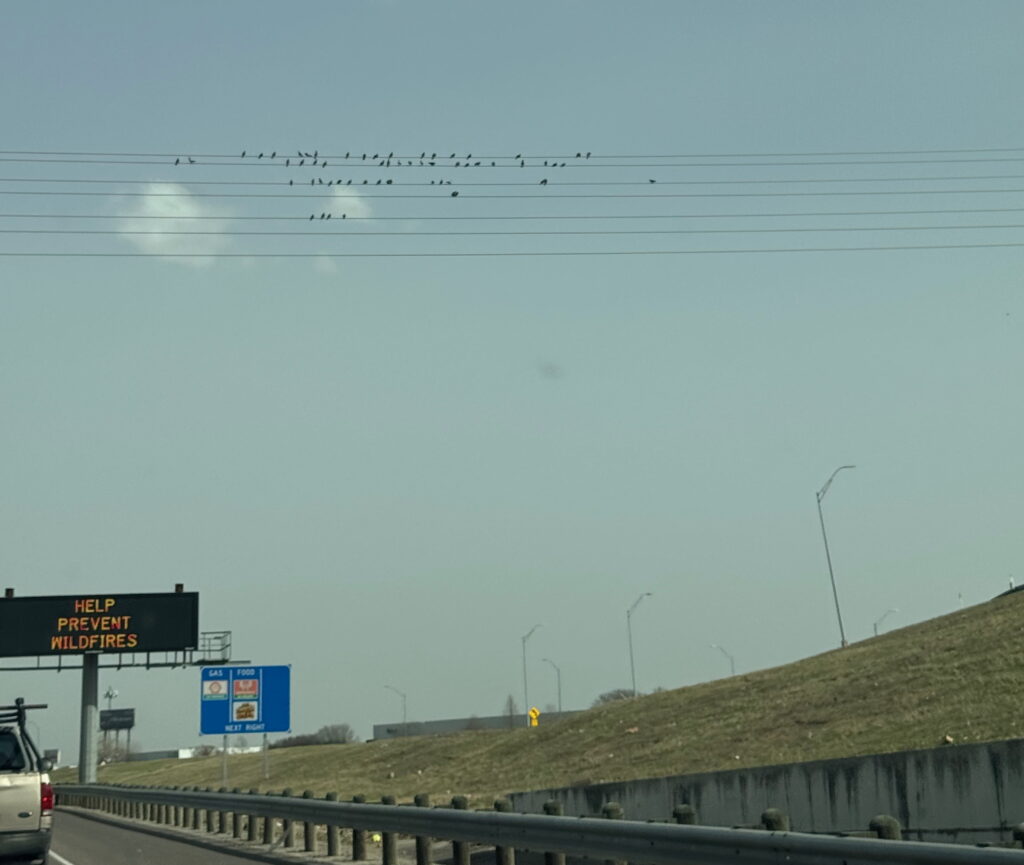
I was immediately reminded of a musical stave, with the resting birds as notes. So I played them. Here’s what they sound like (as ⅛ ♪).
It was a bit of a challenge determining where a “note” fell in the photo, but my rule was if any of the bird visibly descended below a wire it counted as being a note bisected by the line. If not, it was a note between lines. I didn’t put bar lines in or really attempt slurs or much beyond quantization and legato.

I’m not the first to do this. Brazilian musician Jarbas Agnelli beat me to the idea in 2009.
There’s nothing natural or inherent about modern staff notation of course — or of any of the many alternate ways of transcribing music. But the relationship between tones is mathematical and thus spatial arrangement takes on mathematical meaning when music becomings symbolic. Great composers design this spatial arrangement like master architects. Many can write music ex nihilo without first playing it, creating music purely as ink blots on and between lines.
Why are those birds grouped the way they are? Is it completely arbitrary? Are the two birds at far left engaged in something? Is the one at far right outcast? Why do the numbers of birds decrease as the wires get lower? I have no idea, but I do think there is meaning in their arrangement.
The recording above is sonorous, at least, if not exactly catchy. I derive no avian insight from their placement in sonified form. Maybe there’s order there, mathematical or even natural.
I’m going to keep listening.
Unfriendly Confines
Prefer to listen to this post?
You’re in a box. It’s dark. There’s only one thing to focus on. You really can’t make noise. Are you in a coffin or are you in a movie theater?
Greetings, travelers! And welcome to the first itinerary where we really don’t go anywhere. Or rather, the places we’ll visit just aren’t very spacious. It’ll be hard to move around much at all, so take a load off and try to relax as we explore a segment called Unfriendly Confines.
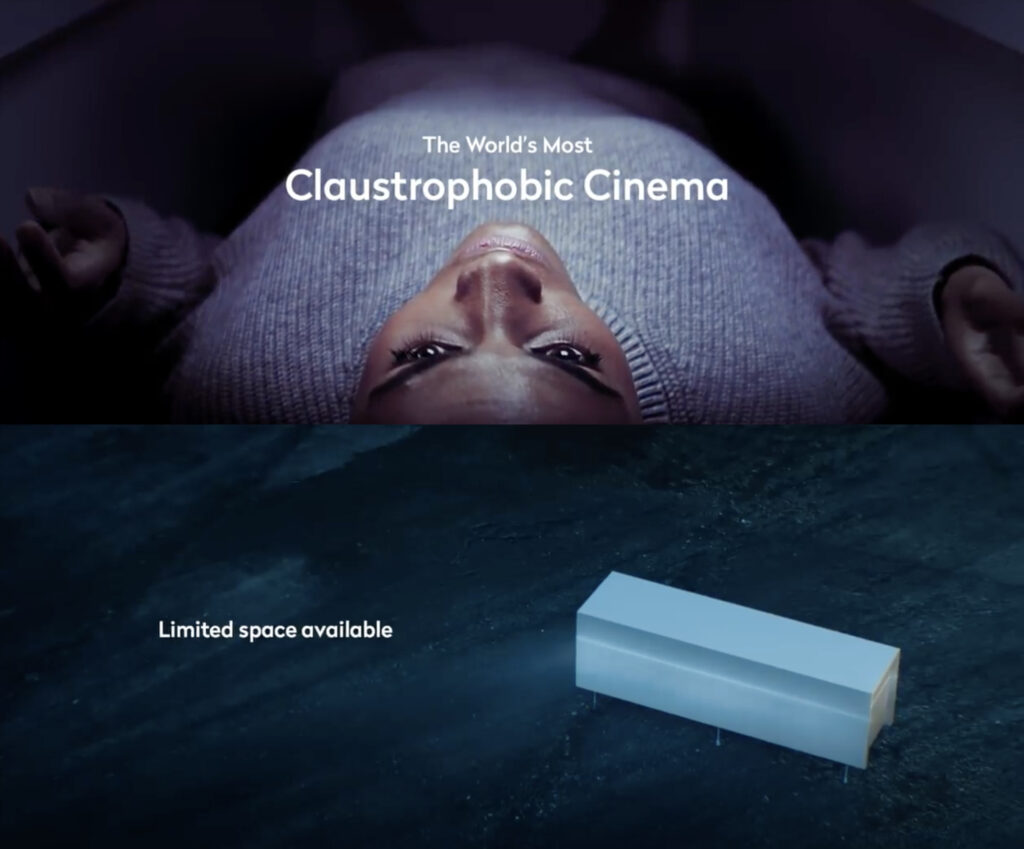
The earliest motion pictures were stage plays performed in front of a camera. How could it have been otherwise? The only directors around then were theatrically trained, so cameras were stationary like the fixed vantage of playhouse audiences. Actors were not yet accustomed to the nuance available when you didn’t have to shout your lines for the cheap seats to hear. The visual language of cinema was still in its infancy.
But we lost something once cinema figured out rapid cuts, unique angles, and sprawling panoramas. Single location films or ”bottle episodes” in TV, as they are respectively known, automatically heighten drama — or at least provide an opportunity for heightened drama — given their intimacy. It’s the same way you lean in to someone when you want to tell them something important … or give them a smooch. Tight quarters are always more dramatic, sometimes in a positive way and often in a very negative way. We of course will focus here on the negative. But before we get to that let’s also consider just the plain economics of single location filmmaking. It’s so much cheaper. Of course we love sprawling epics on the big screen, but a modestly successful film shot in one location — minus the expense of multiple sets, equipment transportation, location producers, etc — almost certainly means your film will make a lot of money.

Most single location movies are thrillers or horror. The reason should be obvious. With very little to look at or to propel the story other than the characters themselves the script (and dialogue) will necessarily be a deep dive into psychological states. Put another way, the space of a single location film is interior rather than exterior. And that can be very very scary, when done well. In the realm specifically of horror, single location films often devolves into claustrophobia. The space itself is a sort of character, providing motivation or challenge or frights simply by being so damn cramped.
Searching for historical beginnings in this micro-sub-genre is complicated by the limited spatial scope of all early silent films. Still The Cat and the Canary from 1927 is generally considered a starting point — and not just of tightly-constrained horror but of the entire “old dark house” setting that characterized so many Universal films through the 1950s. This film — originally a stage play, unsurprisingly — pulls a bunch of family members to a decrepit old house for the reading of a will which leaves all of the decedent’s estate to his most distant relative providing she can be proven sane after spending a night in the mansion. If not, there’s a second will to be opened denoting a different heir. Hijinks ensue (this is, in part, a comedy-horror) and an escaped asylum patient called “The Cat” enters the picture. It’s a fun watch, especially to see what later filmmakers built upon when mining for haunted house tropes and motifs. Note especially the hairy, long-nailed hand reaching through the wall at various points. The Cat and the Canary basically started the we’re-all-stuck-in-a-spooky-house-tonight theme and it’s still going. There’s a straight if dotted line from this film to 2019’s Ready or Not, also about a woman who must survive the night with family in a kooky mansion.
So let’s look at some confined space movies, going from roomiest to most cloying, like a slow-moving trash compactor.
Let’s start in a grocery store. And you know, it sure is foggy outside. That’s right, it’s The Mist from 2007, Frank Darabont’s re-telling of the classic Stephen King novella. Obviously a supermarket is not all that constrained as far as spaces go — and it is certainly well-provisioned. But the interplay of personality types surrounded by an unknown danger outside the all-glass facade of the building makes it seem a heck of a lot smaller. Interpersonal disagreements about what to do escalate quickly as evidence of the mortal peril the shoppers are in becomes unavoidable. So here’s my First Axiom of Single Location Horror: conflict shrinks space. No matter how roomy your confines, when things go south the drama ratchets up. Think about the last time you were on a subway, everyone minding their own business, and then someone does something causing upset (yelling, unwanted solicitation, vomit, whatever). Drama up, you shrink into yourself. The walls close in a bit.
We’ve left the grocery store, safely somehow, but we’re headed to our car, alone, in a parking garage. This movie is P2 also from 2007, a tale featuring only two people in the garage on Christmas Eve. Angela, just trying to go home for the holidays, and Thomas a security guard who also turns out to be a molesting, murderous psychopath. Some spaces — no matter how roomy — seem cloying. I’d put parking garages, especially at night, high on this list. They are never lit well enough, smell of gasoline, and there are no right angles along the x axis, which is disconcerting to the human brain. There’s a safe space, your car, but you have to find it and that in itself can be a source of anxiety. What makes this film work is how inhuman the space is. Parking garages are car storage; they are not for people. Just raw concrete and stains. So the Second Axiom of Single Location Horror: constraint isn’t only about square footage; it’s also a function of habitability.
Let’s go vertical a bit with Robert Eggers 2019 The Lighthouse. Like P2 this one features only two actual people. It’s a great example of psychological horror bleeding into mythological horror. Much has been noted about the standout performances of Willem Dafoe and Robert Pattinson in this tale of isolation and creeping lunacy. It’s a fantastic movie. You should watch it. You’ll get the sense of claustrophobia on this rock immediately. The point I want to make is that the job of a lighthouse is to demarcate space, but in an odd way. The light beacon is both saying “your boat shouldn’t be here or it’ll wreck” and “your boat is on the right path, good job, here’s your waypoint, keep going for safe harbor”. Put another way, it’s saying “get close, but not too close”. Uncomfortable quarters indeed.
Of note, Eggers shot this film in the unusual aspect ratio of 1.19:1, which is almost a square. Known as the Movietone ratio this was used mostly between 1926 and 1932 as silent films were transitioning to talkies. So in addition to reminding cinema nerds of this early phase of stage play films, or reminding today’s congenitally online hordes of Snapchat and Instagram videos, it’s an incredibly crammed visual space to work inside. Not unlike, say, a lighthouse. The film is also shot in black and white. There are nostalgic reasons for this, of course, but technically black and white film reduces the visual clutter, highlighting shape and pattern with the removal of color. It doesn’t make a space smaller, necessarily, but it makes what’s in the frame stand out with more contrast. Negative space is easier to highlight and bright light, overblown like a Fresnel lens swinging around in front of you, immediately consumes the whole space. All of which to deliver the Third Axiom of Single Location Horror: technical creativity in film can be just as useful in creating close quarters as the physical aspects of the set.
Sometimes the confined space is a literal stand-in for us, the viewers, sitting rapt in the theater. All iterations of voyeurism horror owe a debt to the great Rear Window from 1954 by Alfred Hitchcock. Rear Window is emblematic of and a possible decoder for Hitchcock’s obsession with single location (even single take) filmmaking — see Lifeboat, Rope, Dial M for Murder, and of course the shower scene from Psycho. More than anything Hitchcock here seemed interested in using confinement (literal in this case as James Stewart’s character is wheelchair-bound in his apartment for almost the entirety) to make a comment on the act of viewing and our desires as viewers. Those desires include morbid curiosity and male sexual fantasy. And that right there is a good description of the popularity of at least some genres of horror, like 80s slashers. It also is useful biographically when considering Hitchcock’s rampant misogyny. I love this movie for many reasons, but lately it seems even more relevant as hordes of would-be sleuths sit entranced by their computer or phone screens, Rear Window-like, attempting to solve mysteries of what they think is happening in the outside world. Looking at you, conspiracy theorists. But let’s return. The Fourth Axiom of Single Location Horror: often the constraint imposed by the space permits an extended view outward, revealing frights that would otherwise go unnoticed. Peeping Tom, One Hour Photo, and the somewhat recent The Voyeurs are good examples — though there are dozens of others.
Getting cabin fever yet? Climbing the walls? Maybe just seasonal affective disorder? Let’s quickly run through three very different films all of which showcase the diversity of confined spaces. Say what you will about M. Night Shyamalan, but his story for 2010’s Devil is 80 minutes of tight frights. Devil takes place almost entirely in a stuck elevator with five occupants aboard. One of them, it turns out, is Satan himself. Or herself. The lights continually flicker and usually there’s some new mayhem to deal with when the lights return. The five naturally start accusing one another. As ever with M. Night there’s a twist or at least an unforeseen reveal at the end. It certainly got me.
Then there’s Open Water from 2004 about two scuba divers in the tropics who surface to learn that their dive boat has left without them. That’s pretty much the movie: pure survival horror. The irony here is that the open sea could not be a less constrained space. You can go for miles in any direction (including down). Except of course you can’t because you have to eat, you’ll get cold, and you’ll eventually run out of energy. And oh and let’s not forget stinging jellyfish and hungry sharks. So you’re stranded by biological need rather than anything else. In some ways it’s worse than a broken elevator.
Changing climates we arrive at Frozen — no not that one — the one from 2010 that follows three snowboarding buddies who are stranded on a chairlift when the ski hill operators forget they’re there and shuts down for the weekend. This is also survival horror of course — where the threat is dehydration and freezing to death — but here there’s one, actually two, obvious ways out of the predicament: up to the transport cable or dooooooown to the snowy slopes below. Both are attempted; neither attempt goes well. Also there are wolves for some reason prowling the east coast The tension in all three of these films comes from the breakdown in personal relationships — five people, two people, or three people. Either trust falters, or individual self-preservation takes over, or latent horrible behavior emerges. This is the horror of movies where people are trapped in close quarters. It’s rarely about the threat posited in the trailer or promotional material. And so to our fifth and Final Axiom of Single Location Horror: Human foibles metastasize, usually catastrophically, in confinement.
But we’re not quite done. We have to get even more constrained, the ultimate and final constraint really. Buried from 2010 stars Ryan Reynolds in a coffin. For the whole movie. There are a few other actors, none shown except on a grainy cell phone screen and mostly providing only voice. This, my weary travelers, is the apotheosis of claustrophobia horror. There is not a single shot from outside the coffin. Indeed, there is not a single shot repeated in this film. I’d love to see how it was made, technically. Reynolds here plays an Iraq-based American civilian truck driver who is buried alive in a plot to extract a ransom from the American occupying forces. He is given a Zippo lighter and a Blackberry. We are Reynolds in this film, slowly suffocating both from the diminishing air and eventually from leaking sand. In fact, the sand sluicing into the coffin is almost a literal hour glass. You know time’s up when the coffin fills up. I think it works and perhaps is proof that good storytelling requires only … a good story. No elaborate sets, no hyper-realistic effects, no lore. And maybe that’s a bonus axiom which applies to all film: despite the affordances of modern cinema, ultimately to be successful a film must tell a good story. It’s just that sometimes you have to trap the story in a box in order to realize that.
What’s that? You’re itching to get out? A little stir crazy? May I recommend the following?
- 10 Cloverfield Lane in a doomsday bunker.
- Paranormal Activity in a small house.
- Bug in a motel room.
- 1408 in a hotel room.
- ATM in an enclosed ATM station.
- Panic Room in a home panic room.
- Pontypool in a DJ booth.
- Flightplan and Red Eye both on planes.
- Life on a space station.
- All the train-based horror we discussed on our last journey.
Well that’s it this week. For goodness sake, stretch your legs. Go take a long walk or something. Catch a baseball game. May your confines going forward be nothing but friendly.
A full list of the movies mentioned above can be found at Letterboxd. Find out where to watch there.
The Terror Tourist is my occasional segment on the Heavy Leather Horror Show, a weekly podcast about all things horror out of Salem, Massachusetts. These segments are also available as an email newsletter. Sign up here, if interested. Here’s the episode containing “Unfriendly Confines”:
Hell On Wheels
Prefer to listen to this post?
This week our journey isn’t about where we’re going, my tireless travel companions, it’s how.
I’m a train nerd, not quite what is somewhat derisively called a “foamer” (that is, someone who foams at the mouth at the sight of unique rolling stock) more like a casual trainspotter. My grandfather was an engineer on the Burlington Northern railway which is partially how my line ended up in Chicago. Maybe it’s in my blood. And on the subject of blood and trains, this week we’re talking about rail-based horror in a segment called Hell On Wheels. [play train noise ↓]
There’s a pretty compelling argument that one of the first films ever shown to an audience was horror. Or, at least, horrifying. L’Arrivée d’un train en gare de La Ciotat, a 50 second strip of gelatin emulsion and silver halide captured by the French Lumière brothers in 1896, shows a steam-belching passenger train pulling in to a station. That’s it, but oh the sensation it caused. New to almost everyone in the attendance, this moving image, this picture literally in motion of a giant train engine heading straight at the audience caused fear, panic, and fleeing to the rear of the room. It’s been called the founding myth of cinema. And it may be just that, a myth, in the sense that it may not strictly speaking have happened, but it’s also mythic in that it has become the primordial, uncontaminated, visceral audience reaction that every filmmaker — especially makers of horror — longs to achieve.
Trains were at the center of early innovation in spooky special effects. Just seven years after the Lumière boys’ train short an unknown filmmaker created its inverse, literally. The Ghost Train from 1903 shows a train coming around a curve and past a stationary camera, but the print is of the negative, a truly novel technique at the time. This spectral train is made even creepier by the insertion of a separate film of the sun and clouds, also in negative so looking like the moon, up in the corner. It’s a minute long, plotless like L’Arrivée, but it shows the beginnings of technical innovation in filmmaking for the express purpose of frightening viewers.
Even if we didn’t have these charming strips of turn-of-the-century transportation, it cannot be denied that filmmakers love trains. They add an aspect of dynamism, can travel through multiple settings in a short period of time, and offer a conveniently constrained storytelling and staging space for filmmakers to work with. More than one director has noted that trains are in fact metaphors for movies. In cinema, unlike literature, the viewer is not in control. The audience — at least in a theater — has to sit back and experience it until it reaches its destination. You may recall the opening moments of Lars Von Trier’s Europa where the visual similarity between the image of a train going over tracks (or overhead) and film running through a projector is made absolutely clear.
Trains were made for horror. Locomotives can be frightening simply because they are loud, powerful machines made of unforgiving metal — sometimes accompanied by fire, smoke, and sparks. Even better, there’s a whole type of train that only lives in dark, damp underground tunnels full of high voltage wires and rails and pizza-stealing rats. Trains often drag along all manner of characters readymade for horror films: drifters, bandits, late-night urban revelers, people brought together from very different walks of life. Even just the presence of trains can turn a place dark. The term “Hell On Wheels” was originally used to describe the shanty towns of sin that would pop up along the route of the workers as they laid the trans-continental railroad from Omaha to Sacramento. Violent, full of drunks and ne’er-do-wells, and temporary enough to be basically lawless these towns were ready-made to become ghost towns as soon as the rail line moved westward.
Travelers, it’s time to move into the main hall of the station, look towards the clacking of the departure flipboard, and review our options today. The rail yard is so full of train-based horror films we’re going to have to shunt most to sidings. Our departures here today will merely represent the breadth of destinations available in the sub-genre. All aboard! Let’s deadhead this itinerary.
Early experiments with film and trains notwithstanding, the genre mostly begins with Horror Express (1972). This is sci-fi horror with a similar premise to The Thing From Another World. An anthropologist brings the frozen body of an ancient human-like creature onto the Trans-Siberian Railway. Of course, it thaws and it’s … not pleased. Among those stalked aboard this express are Christopher Lee, Peter Cushing, and Telly Savalas. Horror Express is a must-watch for your itinerary.
Also from 1972 and also starring Sir Christopher — with Donald Pleasance at the height of his career — is Death Line also known as Raw Meat. Turns out, a group of Victorian workers who built the London Underground subway were trapped by a cave-in in 1892 and their descendants still live down there by way of cannibalizing hapless commuters. The movie ends with the sound of the cannibals echoing through the tunnels “Mind the gap!” What’s not to love about that?
Maybe the most important stop on today’s journey is Terror Train (1980) featuring Jamie Lee Curtis in her post-Halloween scream queen bender. The premise is everything you’d want in an 80s slasher. A group of graduating college kids, all of whom participated in a prank-gone-horribly-wrong three years earlier, have a masquerade party on a train trip and are picked off one-by-one by a killer who changes into the costume of each of his latest victims. Look folks, this is the only film David Copperfield ever starred in not as himself. And he gets a sword through the head. Somehow this is pleasing. I have always loved the dynamic between the train staff (all adults) and the passengers (all college kids). Everything about this film works, especially its ending. If you liked Jamie Lee Curtis in a costume party on a train in Trading Places you’re gonna love this. Turns out, there is a sequel called Terror Train 2 made 42 years after the fact, which I have not seen. Travelers, should I get a ticket to ride?
Night Train to Terror (1985), which certainly sounds promising, is an anthology made from three unfinished films shot years earlier. The only thing that makes this a train film is that it is framed by a conversation between God and Satan discussing the fate of passengers on their way to Vegas. These My Dinner With Andre interstitials are accompanied by what can only be described as a pop music video happening on the train at the same time. It was 1985 after all and MTV reigned supreme. God and Satan chatting it up, sure. But everyone knows that passenger service to Vegas ended in 1971. C’mon, people. It is absolutely clear that the segments here were intended for longer run times. There are plot threads that go nowhere, leaving only gore and boobs. Which, maybe that’s your thing. I consider this movie pretty much a train wreck.
What if the movie Hostel but on a train? Well, that’s the premise of Train (2008), three years after Eli Roth’s film. Apparently this was originally intended to be a remake of Terror Train, but it became something utterly different — probably after it saw how much buzz torture porn was getting. The setup is a group of American high school wrestlers on their way to a match in Ukraine who board a train to Odessa. Little do they know that every other passenger on board is a patient awaiting an organ transplant of some kind and the tourists are being harvested for theirs. A jostling train may be fine for torture and dismemberment, but it probably is not great for transplant surgery which is why the third act takes place at the ruins of what looks like a medieval hospital along the route. This is a fun movie, utterly derivative, but suitably gory with a believable final girl played by Thora Birch.
The Midnight Meat Train (2009) is why you really don’t want to take the last train of the night on a line that doesn’t run 24 hours a day. Who knows where that thing ends up? This movie, based on a short story from Clive Barker, stars Bradley Cooper and Leslie Bibb. (Brooke Shields is also in it, for some reason.) Bradley is a photographer trying to solve the case of disappearances in the subway late at night. He eventually discovers that a butcher named Mahogany has been responsible for murdering passengers on the midnight train. And the fact that he is a butcher is important because it isn’t cannibal Victorians living down there, but something far more warped from the mind of Clive Barker. I won’t spoil the ending because I love this film and I hope you do too.
D-Railed (2018) contains so many of my favorite things in a horror movie. It’s set on Halloween. It takes place aboard a train, and it takes place underwater. Mr. Tour Guide, you must be thinking, that’s preposterous! Let me explain. The movie starts with a bunch of folks on one of those candlelight murder mystery outings aboard a train. Then it becomes a heist movie. Then the heist goes wrong and the train crashes into a river and is partially submerged. But see there’s a monster in the water, the bastard child of the Creature from the Black Lagoon and the Marvel symbiote Venom. The hapless passengers eventually make their way out of the sinking train car wherein the film becomes a cabin-in-the-woods slasher . And then in the last of too many acts to follow for an 80 minute movie it becomes a ghost story. However, the kills here are gory and 100% practical. Points for that. Points also for Lance Henriksen’s top-billing paycheck earned for about three minutes of screen time.
Let’s take a special spur line to talk for a moment about Asian train horror. It’s an exceptionally robust sub-sub-genre. My favorite zombie flick of all time has to be Train to Busan (2016) from South Korea. This is a great film, period; it just happens to talk place mostly on a train, in train stations, or in train tunnels. And, unlike many films discussed here, it uses the physical setting — rolling cars on tracks — as part of the plot, not just part of the setting. Like old time westerns where the roof of train cars allows cool chase and showdown vignettes, the actual train to Busan is used creatively and surprisingly. Train to Busan has spawned an animated prequel called Seoul Station, also excellent, and a standalone sequel called Peninsula which I have not seen. Junkrat Train (2021) from China is, well, about a train infested with rats. The more high-minded but no less fun Kisaragi Station (2022) from Japan takes an Internet meme about a fictional, supernatural train station and rolls with it.
When my family and I first moved to Denver we often heard a train whistle in the distance, especially late at night. But here’s the strange thing: there were no rail lines anywhere near where we lived in Denver. We searched for the source of this train whistle for months before eventually giving up and simply saying “well, there goes the ghost train again”. It became oddly comforting. If you like ghost trains too be similarly comforted in knowing that there are at least 19 films (most but not all of which are horror) with this name.
There are loads of horror films that use trains only partially and to great effect — let’s call this intermodal train horror. For example, the final scene of Drag Me to Hell (2009) shows the cursed protagonist, Christine, as she falls onto the tracks ahead of an oncoming train. We’re meant to think that death-by-smooshing is the calamity headed for her, until she realizes in that very moment that her efforts to avoid hell were thwarted — and it comes clawing. Rabid, An American Werewolf in London, Friday the 13th VIII (the one which has 20 minutes in Manhattan), and the original Creep all have great sequences aboard rolling stock.
As noted this review of train-based horror barely makes a dent in the subgenre. Others worth exploring if you have a one-track mind include Beyond The Door III, Snakes on a Train, End of the Line, The Tunnel (reviewed on this show last April), and Ghost Track.
In 2007 I rode a magnetic levitation train called the Transrapid, the world’s first production-grade maglev for transit. It runs from the Shanghai airport to the edge of the city and reaches a maximum speed of 268 MPH. This may be the most scared I have ever been on a train. For one, I was the only passenger in my car, possibly the only passenger on the train. For another, when I worked my way up to the cab at the front of the first car and peered in through the dark glass as we broke 250 MPH, I saw the sole engineer enthusiastically reading a comic book not ever looking at her controls or out the windshield. WTF. But mostly it was the knowledge that a derailment (if that’s the term for magnetic de-coupling) at this speed would never be survivable. Especially so since the entire route is elevated a few stories above grade. A crash of this train would essentially be that of a slow-moving, low-flying airplane. It’s all I could think about. I enjoyed it, I suppose, in the same way that a roller coaster is enjoyable. Might be thrilling, might kill you even without a maniacal killer aboard. Who knows? And maybe that’s why there are so many films in this niche genre: the very thing you’re traveling on is a potential threat.
OK, tourists, it’s the end of the line. Thank you for joining me on our search for the dark at the end of the tunnel. May your movie viewing always find you on the wrong side of the tracks.
A full list of the movies mentioned above can be found at Letterboxd. Find out where to watch there.
The Terror Tourist is my occasional segment on the Heavy Leather Horror Show, a weekly podcast about all things horror out of Salem, Massachusetts. These segments are also available as an email newsletter. Sign up here, if interested. Here’s the episode containing “Hell On Wheels”:
Garden of Forking Paths
Prefer to listen to this post?
My traveling compatriots, I know it has been a wearying year of sites and topics, but we can’t let up now. We’re gonna get super lost today. Maps won’t work. Itineraries will be an illogical mess. Today we’re gonna talk about non-linear horror in a segment called The Garden of Forking Paths.
The shortest path is a straight line, right? Probably, if we forget about bizarre quantum behavior and wormholes, but sometimes a line that isn’t straight at all can make for an interesting story. It’s true that the constraints of film — which are produced by someone (or group of someones) controlling the progression of a story which has a discrete beginning and end — make non-linearity difficult and sometimes confusing. Moreover the format of film basically disallows choice or meaningful interactivity from the viewer. But this difficulty, this resistance in the materials so to say, can deliver compelling and often unsettling films. Non-linear storytelling is most common in thrillers and to some extent drama, but it’s the very way that going against convention destabilizes the viewer that makes it perfect for horror, when done well.

The title of our journey today, Garden of Forking Paths, refers to a 1941 short story by Argentine author Jorge Luis Borges (full text here) in which he describes a writer who has created an infinite text which forks off a new story from every single event in his novel. While we don’t have that (in any form of fiction) the internet has, in a way, given us a garden of forking stories, however amateur, in the terabytes of fan-fiction that are spun up extending beloved or cult novels and films. This doesn’t happen as much in horror as in other genres, though it certainly does happen — even sometimes convincing studios to make actual films based on fan concoctions and hoped-for franchise crossovers. Or sometimes fans just take it upon themselves, copyright be damned, to make films out of stories they dream up. For example, the surprisingly good Never Hike Alone, is one of 19 fan-made films listed for Friday the 13th on IMDB. (I struggle and fail not to mention the largely fan-driven Amityville universe, which at the time of this recording, consists of 56 films. This may be the closest we’ll ever get to Borges’ garden, sadly.) The horror-adjacent genre of true crime also spins out dozens of potential storylines by virtue of the fact that these shows often do not have an ending, some of which like Unsolved Mysteries come right out and tell the viewer so. Everyone watching these shows has a theory and amateur sleuths set off on sometimes ludicrous attempts to provide their own narrative conclusion.
But these are all exceptions to traditional filmmaking and you could argue are examples of derivation rather than non-linearity. So what about actual non-linear horror films? OK, travelers, fine, let’s get back on the path — but I told you I’d lose you. The irony is that most films are not shot in a chronological sequence that conforms to time as depicted in the movie. This of course is for logistical, often economic reasons. But my guess is that some directors — in shooting out-of-sequence — are presented with new artistic possibilities of contrast, juxtaposition, or information disclosure that weren’t in the script to begin with. This is just a personal theory. Any listeners out there who direct films, please tell me how wrong I am.
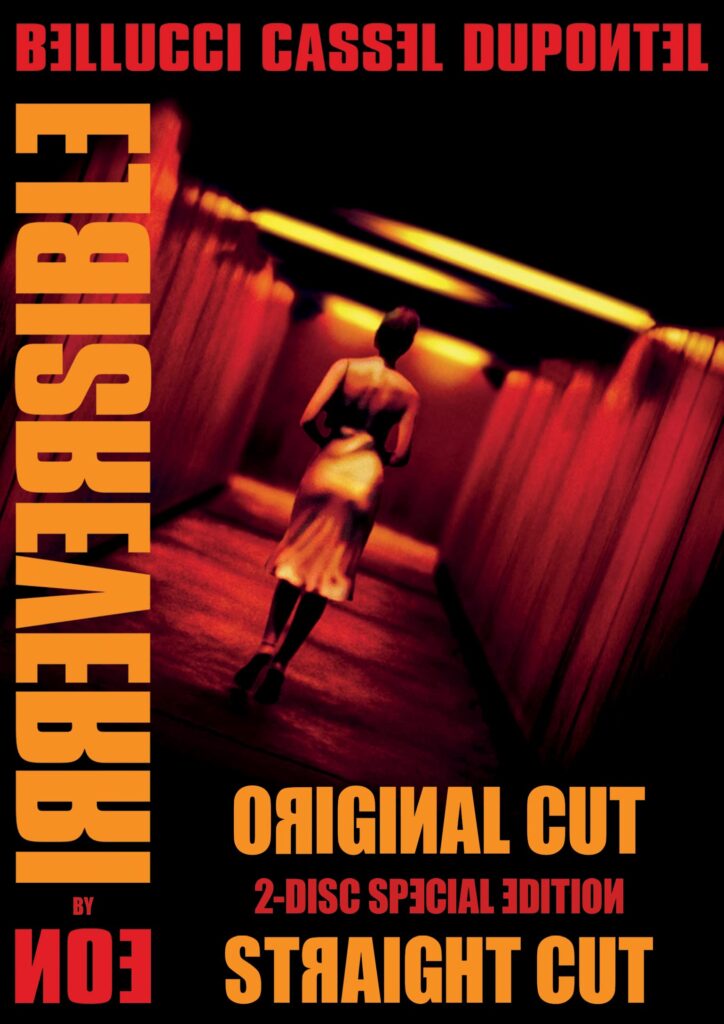
The simplest kind of non-linearity are flashbacks and rewinds. Many horror films contain at least a bit of storytelling purely for backstory purposes. When this is done anywhere but the beginning of the film that’s a flashback. There are too many examples of this to list, but some films use flashback in novel ways. The original Cloverfield, a kind of modern-day Godzilla flick, is presented as the continuous footage from a camcorder the night of the film’s mayhem. The expository flashbacks occur in sequence, though, as they are snippets of home movies previously recorded on the tape that is being recorded over imperfectly the night of the events of the film. It’s quite clever. Many of the Saw franchise, certainly the first, only make sense once the chronological events of the film are decoded via an elaborate narrated flashback at the end of the film. This flashback is a kind of storytelling in reverse, an actual rewind re-interpreting the events you just witnessed through a different frame. The 2002 French film Irréversible by Gaspar Noé presents an entire film in reverse, which of course inverts the audience’s normal sense-making task and expectations. The film follows two men attempting to avenge the rape and beating of the woman they love. It is also one of the most graphically brutal films I’ve ever seen. Two versions of this film exist. The original at 97 minutes and the “straight cut” told in forward chronology at 86 minutes. Having not seen the straight cut I don’t know which 11 minutes were cut out, but it does make me wonder if they contain plot points that are only necessary to avoid complete confusion in the original, reversed telling.
Moving into more complex non-linearity are time travel and time loop-based horror films. Listeners need only loop back one episode in their podcast queue to last week’s Heavy Leather Horror Show for a good example of a horror time loop (played out literally as spatial recursion) in the film Drive Back. Time loops work especially well in comedy and horror, related genres in so many ways, because they give the audience the opportunity to wonder how the next iteration will deviate from the previous. This is a setup for a laugh (in the case of comedy) or a surprise (in the case of horror). Time loopy horror, though, benefits from the very claustrophobia of the conceit. Being trapped in time is no less scary than being trapped in a space. Scarier, in some ways, because at least characters can die trapped in a space; often in time loop tales they can’t even perish, trapped forever in a looping hell of the same events over and over. Another good example in this sub-genre is the film Every Time I Die, “the story of a man, who after being murdered, finds his consciousness transferred to the bodies of his friends and tries to warn and protect them from the killer who previously murdered him at a remote lake.”

This week I watched Triangle a 2009 British piece of non-linear horror that really leans into the intrinsic terror of being caught in a loop which becomes a downward spiral as the realization of helplessness sets in. A single mom named Jess, played by Melissa George, with a fraught relationship with her young autistic son decides reluctantly to go on a sailboat excursion with friends. The boat is capsized by a freak storm and they all cling to its hull until an ocean liner with a single figure on its deck comes by. They board it and things start getting weird. For one, it’s empty except for a hooded figure trying to kill them all with a shotgun. Clocks are not in synch. Everything seems strangely from the 1920s. Eventually Jess figures out it is herself — or a version of herself — with the hood and shotgun and that she’s in a horrible loop. She does eventually escape the boat-based loop only to find that she is in another, more terrifying one. This isn’t a scary movie or a gory movie, but it is psychologically harrowing, especially at the end. Or rather, especially when the movie stops.
The majority of non-linear horror is more difficult to classify. There’s no accepted term for the kind of psychological horror whose narrative logic seems pulled straight from dreams. Let’s call these dreamtime films. Psychedelic, nested, or often completely illogical, these films are more about how they make viewers feel rather than providing a coherent narrative. This is non-linearity not as a storytelling device but as a mood-setting technique. What impressionism is to realism in painting. And it works so well in horror. Just the break with convention can be upsetting to a viewer, forget about jump-scares or blood (though they contain those too, of course). Examples of dream-like non-linearity include: Climax (an even more fucked-up film by Gaspar Noé), In The Mouth of Madness, Jacob’s Ladder, Annihilation, Possession, and Videodrome.
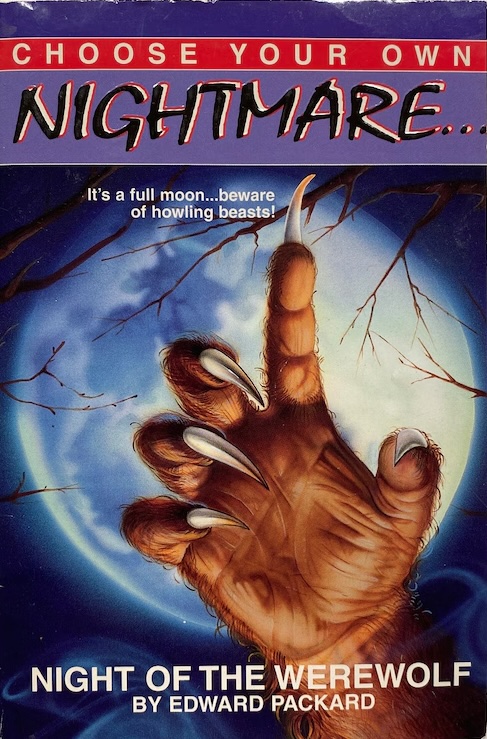
Travelers, let’s stay with horror but step just off the path of film for a moment to talk about true non-linearity, which is to say, interactive storytelling. If you are of a certain age you surely remember the book series from the 80s called Choose Your Own Adventure. These books were presented as literal forking paths where readers would decide what the protagonist should do at various decision points. They were fun, though of course they were finite — an example of what literary theorists call interactive multi-cursal (that is, many paths) storytelling. The reader’s agency was limited of course: go to this page or that page based on a fairly binary choice (i.e., “pick up the hammer” or “pick up the milk carton”). Some of the stories in the original Choose Your Own Adventure were horror tales (like “House of Danger”, “Vampire Express”, and “Ghost Hunter”) and there was even a 90s knockoff called Choose Your Own Nightmare. The niche electronic literature genre known as hypertext has few classics but one of them has to be Shelley Jackson’s 1995 Patchwork Girl, a re-telling of the Frankenstein tale. It’s so much more than that though: what seems like disarticulated scraps of text eventually comes alive, stitched together like the original monster. Being computer-based, Patchwork Girl has sophisticated mechanisms in place for allowing you to continue reading along paths only if certain passages have already been read (or not read). I highly recommend seeking this out. It’s on the platform called Storyspace.

But really interactive horror that would actually frighten someone (and which gave more than yes/no decision-making opportunities) had to wait until video games in the early 2000s. Classic survival horror like Resident Evil pioneered the genre, which would reach its full maturity in titles/franchises such as Silent Hill, House of Ashes, Until Dawn and my personal favorite Dead Space. Indeed many video games today use the same techniques as film — real-world sets containing actors in motion capture suits for instance. And the graphical capabilities of today’s machines make verisimilitude the norm but of course never a constraint.
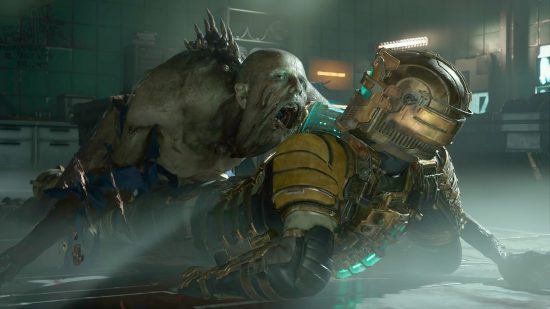
The question often asked is: can you be truly scared when you’re in control of what happens? My answer is absolutely yes, indeed I am sometimes more frightened playing a horror game than when watching a film. Being disemboweled as a consequence of your own actions is a lot worse, for me, than simply watching someone on the screen dump their guts on the floor. I would even say that I have seen horror gaming as a gateway experience for people who would otherwise never watch a horror movie. The sense of control was enough to get them to play a game but then, having enjoyed it, they sought out horror films.
The viewer-in-control aspect of video gaming has even wandered back into film. The 2018 Black Mirror episode called Bandersnatch required new functionality to be built for the Netflix player. The story follows — or at least begins with — a software developer trying to get a game published. You, as viewer, determine the choices he makes. It’s just the right balance of sit-back enjoyment and lean-forward engagement for my taste. The runtime says it is 90 minutes long which may be what happens if you make no choices at all (after 10 seconds the story continues along some default path), but to view everything would take 312 minutes. The shortest possible path to a point called an end is 40 minutes. It’s all live action and, being Black Mirror, quite dark. I do not think Netflix has done anything further with this functionality, but I wish they would.
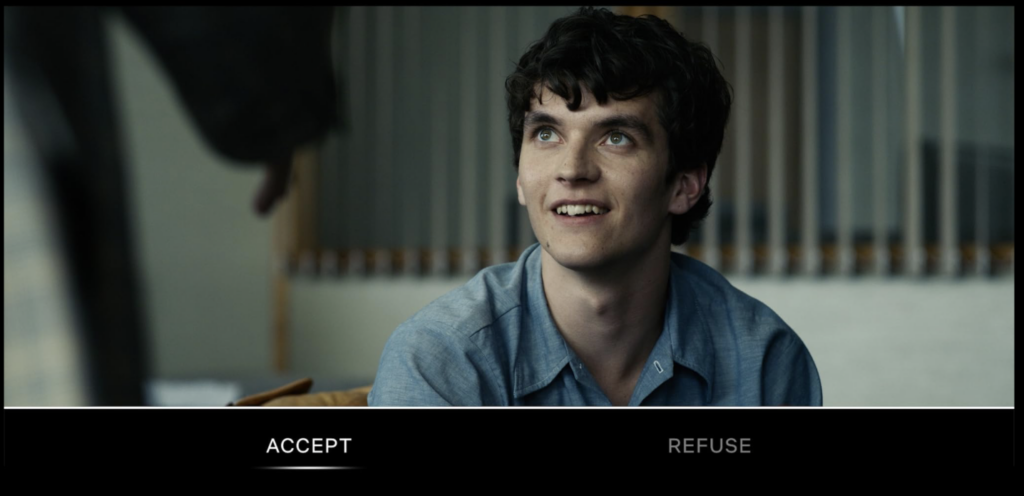
Previously on this show I have plugged a phone app called Guide Along. It’s meant to tell you about things you are seeing on road trips, often but not always through national parks or exceptionally scenic drives. The key to this app is that the story segments are entirely GPS-based. Wherever you are it tailors the content, even reminding you to drive the speed limit lest you trigger a new story too soon. This is non-linear storytelling too, of course, where it isn’t the viewer’s decisions so much as their literal location that determines the sequence. I don’t think there’s an application for this in horror filmmaking, though there could be in haunted house attractions. If you are an investor and this idea appeals to you please call our hotline at (724) 246-4669.
Well that’s it, travelers. Hope you weren’t too flummoxed by today’s journey. Actually If you’re not confused I did this wrong and I recommend you watch any of the films mentioned here. Until next time, whichever timeline that is!
A full list of the movies mentioned above can be found at Letterboxd. Find out where to watch there.
The Terror Tourist is my occasional segment on the Heavy Leather Horror Show, a weekly podcast about all things horror out of Salem, Massachusetts. These segments are also available as an email newsletter. Sign up here, if interested. Here’s the episode containing “Garden of Forking Paths”:
Pied-à-Terror
Prefer to listen to this post?
There is no more important location in horror fiction than the house. The geometry of surfaces that creates an inside where only outside once was, subject to the decay of time like a human body, able to be loved, often to be feared: the haunted house. Tourists, as I speak to you now from a home emptied of the people I love and denuded of the artifacts which made it a place of life, I plot today’s itinerary inside an actual haunted house, haunting at least to me, if not by ghosts, then by memory — which may, frankly, be the same thing. Today we explore the horror of the built environment in a segment I call Pied-à-Terror.
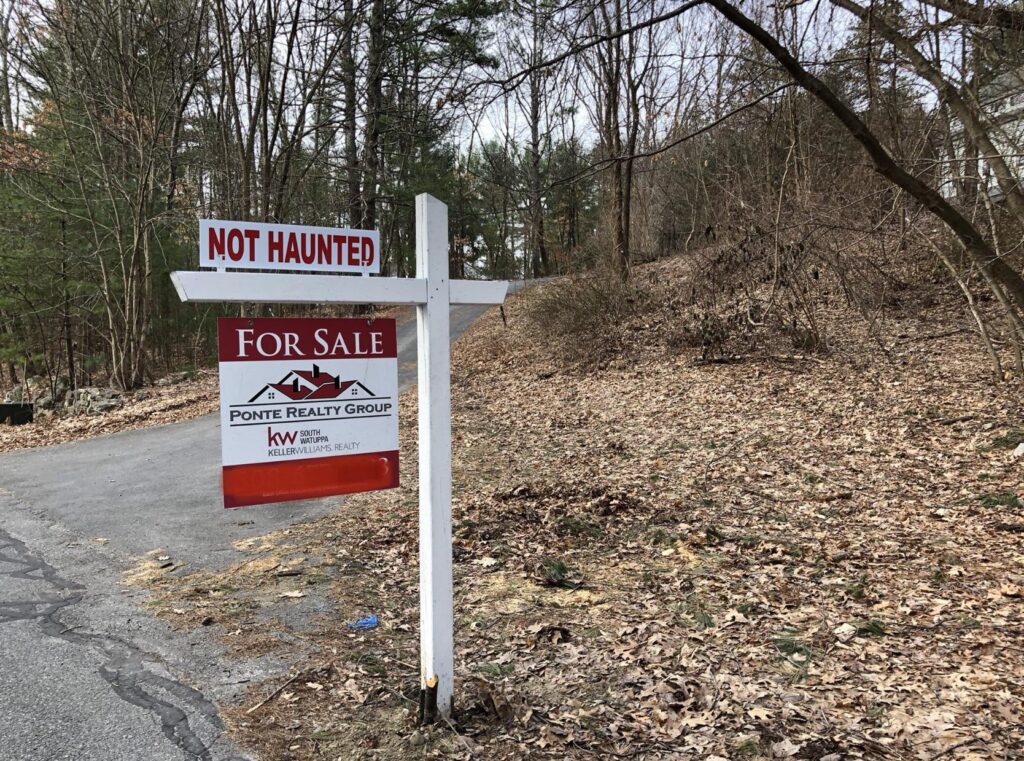
Let’s ask a fundamental question as we begin our journey. Why is so much horror fiction set in houses or other built places of living?
Houses are made for people to live in (as opposed to barns for animals or sheds for storage). There’s a sense that when homes aren’t occupied by people they are at best cold and empty, at worst somehow desirous for other things to move in. We have an urge for homes to be populated, usually by people, and if not then reminders or ghosts of people. They are vessels for living and we want to fill them with something. This is why it is demonstrably more difficult to sell a house that has no signs of life at all (no furniture, etc) than one that is.
Historically, most people have died in their own homes, at least since there has been the concept of a home, and usually they’ve passed away inside bedrooms. Even today some terminally ill people choose hospice inside their homes specifically so that life can end there rather than in a hospital. People who have died — by choice or not — in a home are of course the source of the innumerable ghost tales associated with haunted buildings. We anchor people to location probably more intensely than any other correlative other than smell. (You simply can’t beat smell. Thanks, lizard brain!)
Scientists call this the “sensed-presence effect”, the feeling that there is another person present when there is not. This is explained as a result of monotony, darkness, cold, hunger, fatigue, fear, and/or sleep deprivation. All things that happen to people, especially when alone in a house. Other explanations proffered include hypnagogic hallucinations, restless leg syndrome, and of course very often outright hoaxes. Sometimes it’s the actual decay of a building that is to blame. Carbon monoxide, pesticide, and formaldehyde can lead to hallucinations and have at least on a few occasions been documented as the source of perceived hauntings. Clear up the monoxide leak, no more ghosts.
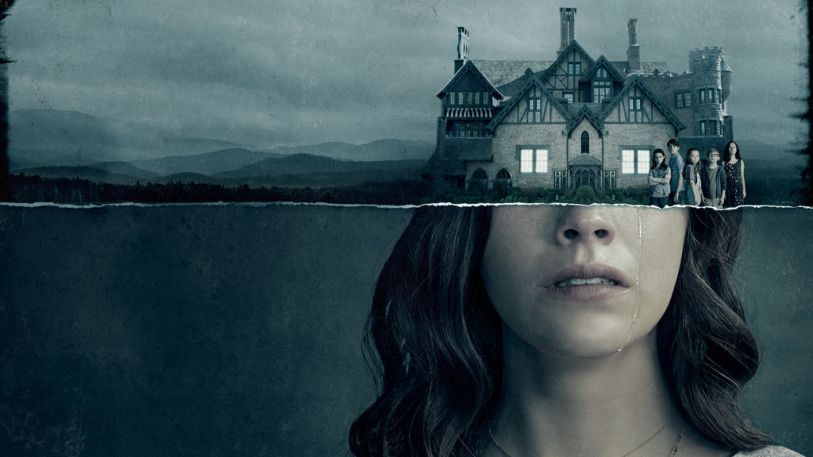
A poll from almost 20 years ago noted that 37% of Americans, 28% of Canadians, and 40% of Britons believed in haunted houses. I bet the numbers are higher now. But haunted houses are one of the oldest beliefs around. Pliny the Younger, the author from first century Athens, wrote what we think is the first tale of a haunted house, in this case a Greek villa bedeviled by a scraggly, bearded man in chains who really just wanted his bones properly interred.
Haunted houses more recently are, of course, everywhere. They are an entertainment industry totally separate from books and movies, especially around Halloween. And their popularity seems to be increasing: I’ve noticed many temporary haunt attractions just staying up and re-theming as Christmas-inspired haunted spaces. Soon it will never not be haunted house season.
Haunted architecture in horror movies specifically fall into a few categories. Let’s walk through this neighborhood together, tourists. Hold hands if necessary.
Our first stop you’ve visited dozens if not hundreds of times before. It is the traditional haunted house (and its inbred cousin the cabin-in-the-woods). If there is a single icon of horror cinema, it is this — the ornate Gothic or Victorian mansion, usually up on a hill, often in a state of disrepair. The formula varies, but, like obscenity, you know it when you see it: Norman Bates’ house in Psycho, the neoclassical mansion from both Phantasm and Burnt Offerings, the haunted house on a hill in Shirley Jackson’s The Haunting of Hill House, New England’s iconic The House by the Cemetery (1981), even the Art Deco castle of the pre-Code blockbuster The Black Cat (1934) — the list is effectively endless. All manner of bad things happen in these houses which are really just dressing on a corpse.
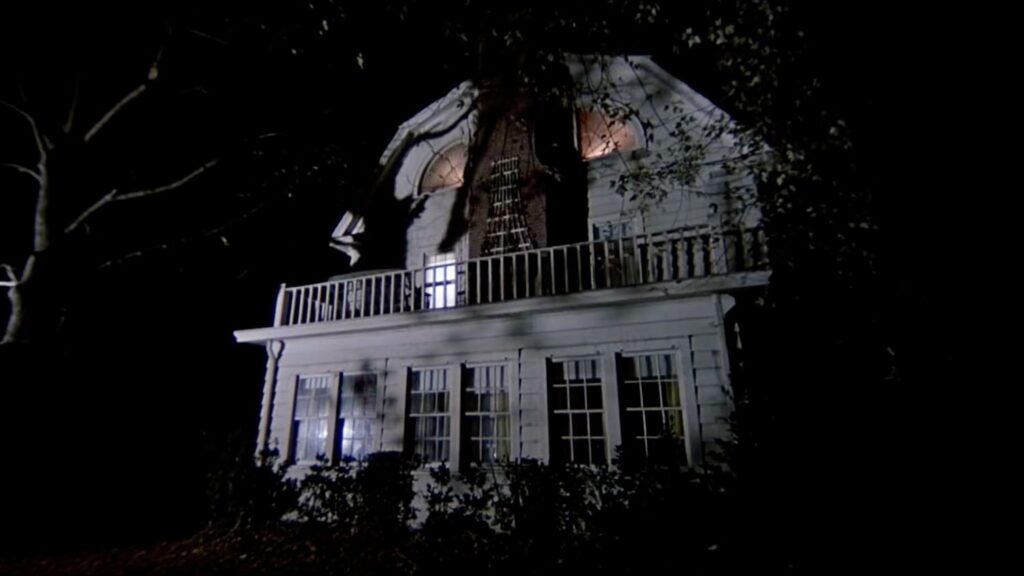
Tourists, let’s take a quick peek down this side street before we get to the next stop. Often what I have called traditional haunted houses are simply creepy locations for the purpose of mood-setting; the threat is something inside (like ghosts) or outside (like home invaders). But sometimes it is the building itself that is the malevolence. Think of the house at 112 Ocean Avenue in Amityville, NY (not to mention that its facade actually looks like a menacing face) or The Overlook Hotel in Kubrick’s take on The Shining, or the outpost dormitory of Robert Eggers’ 2019 The Lighthouse. All of these structures are the antagonists, even while they possess or animate otherwise good people to do very bad things. Put another way, the houses are the source of the misbehavior rather than just the setting for it. This was the twist in Insidious (2010): where all the signs pointed to the home being evil we’re told quite explicitly “It’s not the house that’s haunted”.
One last excursion in this neighborhood if you will: we’re entering the cul-de-sac of suburban horror. The houses in these locales are not exactly terrifying, but their location — in seemingly cozy, safe subdivisions — and their very un-exceptionalism make the horrors they contain that much more disquieting. You probably don’t live in a decrepit castle, but you have at least been in a residential neighborhood. The message in these movies is that the crazy person with the machete will get you either way. Sometimes the very sameness of the homes of suburbia is the scare. Take Vivarium (2019) about a couple who cannot escape — as in, literally cannot find their way out of — the monotony of identical townhouses that make up their community. Poltergeist (1982) was one of the first movies to foreground suburbia as, if not the villain exactly, at least the problem. Developers intent on turning rural land into a planned community place a new home directly above a cemetery, moving only the headstones. It’s a deliberate commentary on suburbia as Steven, the Dad played by Craig T. Nelson, is a real estate agent. Even the original Halloween (1978), set in the fictional community of Haddonfield, places the killer on leafy sidewalks of what would otherwise be the most non-threatening of neighborhoods. In a nod to tradition (maybe), Carpenter used a folk version of a Victorian house for the Strode residence. Suburban homes became such a trend for a while (A Nightmare on Elm Street, The Gate, and countless others) that the first full-throated meta-horror, Scream (1996), was set precisely there.
Our next neighborhood, my tourists, is known for its surreal architecture. Sometimes these Escher-esque places are inhabited by ghosts or monsters, but in all these stories the frightening core — and often the thing that kills — is their spatial disorientation. I have personal experience in this regard. The first office building I worked in, called Wildwood Plaza in Atlanta, was designed by renowned architect I.M. Pei and opened just two years after his pyramid entrance to The Louvre debuted. Like any young idiot new to office culture I could not find my way around, but I later learned this was by design. Pei loved messing with right angles, which is to say, not having them. The halls, ceilings, and many rooms of Wildwood Plaza lacked traditional 90° joints between planes. It was wildly, though not always consciously, confounding. As right angles do not exist in nature, except accidentally, humans have come to rely on them to create orderly, understandable, legible spaces. And when that convenience is missing, we get confused or feel trapped. Which is why illogical or impossible spaces are so prevalent in horror. When characters are disoriented, so are we the viewers.

The touchstone of this genre has got to be the book House of Leaves (2000) by Mark Z. Danielewski. To say that House of Leaves is a story-within-a-story is to leave out at least a half-dozen nested stories. But, at root, is a documentary film purporting to show the lives of a family as captured by their in-home camera system. Their house begins to change in very non-Euclidean ways — doors appear were once only walls stood, corridors extend impossibly beyond the house’s exterior envelope, a gigantic seemingly endlessly-descending spiral staircase appears inside a maze at the end of a hallway. The thing about this book, though, is that the writing style and format are simultaneously metafictional, with multiple narrators at cross-purposes, dozens of different typefaces and colors in use, and even pages that require physically rotating the book or reading it reflected in a mirror — all of this is the house-as-maze-like book or maze-like house-as-book. They are both haunted.
Danielewski’s novel has never been made into a film. I’m not sure it could be. But hoo boy would I watch it if it were. (Sidenote for game nerds: there is a Doom mod called MyHouse which was purported to have been created from a simple house map that the creator’s friend, recently deceased, left on a floppy drive. It is very much not that as the house shifts its shape and orientations, just like House of Leaves.)
Cube (1997) is a perfect example of, if not strictly-impossible, then highly improbable architectural horror. It follows five people who find themselves in perfectly square rooms that containing numbered hatches on the floor, the ceiling, and every wall which lead to exactly similar rooms, though each has been separately set with deadly traps. By way of prime number mathematics and, helpfully, learning that one of their cohort was hired to design the outermost shell of the maze, the group devises a plan of escape only to learn that, in fact, the structure is more of a Rubik’s Cube than a static one. The rooms can reconfigure and attach to different rooms. Like the rooms themselves, the movie Cube has led to three other near-duplicates of itself Cube 2: Hypercube, Cube Zero, and a Japanese remake.
Other good examples in this sub-genre include The Platform from 2019 about a vertical prison whose inhabitants are fed by a giant dumbwaiter that drops daily from the topmost floor through 333 levels, leaving the lowermost with nothing but crumbs and gristle, Relic, an Australian film from 2020, where the house of an elderly widow comes to mimic her own dementia, and even to some degree the haunted hotel room film from the Stephen King short story 1408.
Tourists, let’s end our walking tour at some places that deserve special attention. Here are two films that stand out precisely because they are about architecture per se.
The Night House (2020) begins with Beth whose husband, an architect who designed and built the house she lives in, has just committed suicide. One of her friends consoles her saying “You spend so much time with in the same space with someone it’s gonna feel like they are there even when they are not.” If you’re looking for the TL;DR version of this essay on haunted houses, that quote is it. As Beth attempts to deal with her grief she suffers from what seem like hallucinations until she stumbles upon a set of floorpans for a reversed version of her house. Eventually deep in the woods she finds an actual reversed copy of her house filled with ghostly women who look similar to but not exactly like herself.
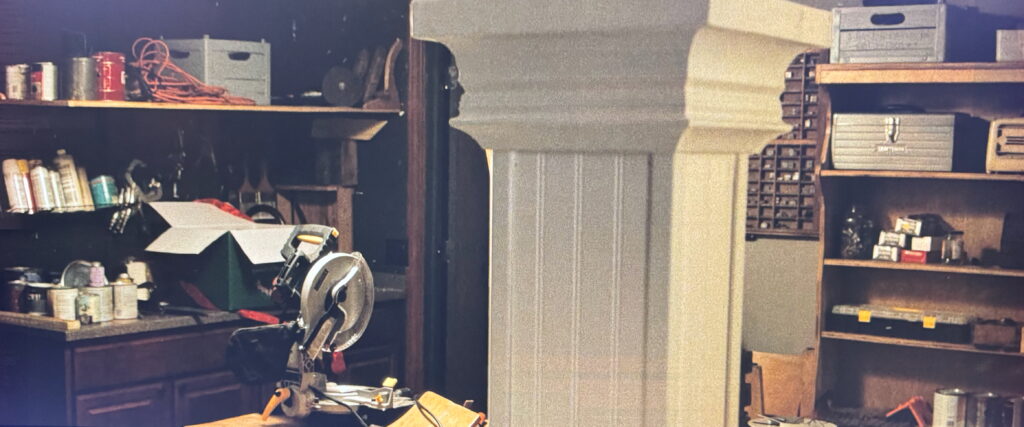
This film makes great use of literal architecture as the source of fright. There’s a scene where Beth notices that the shadows cast by the moulding atop a basement pillar look unsettlingly like a human silhouette. It’s so clever and well-executed that I missed it, until the shadow moves and I jumped out of my seat. Without spoiling the movie I will say that Owen’s construction of a house-in-reverse is an attempt to fool dark forces out to get Beth who seems to have thwarted their plan for her years ago. The crazy house is actually the solution to the haunting rather than the haunting itself. A very novel take on the trope indeed.
Written and directed by Lars Von Trier and starring Matt Dillon, The House That Jack Built (2018) is a story that hangs off the scaffolding of the structure of Dante’s Inferno. It’s told through a series of flashbacks to the murders of Jack, a wannabe architect and very definite serial killer. The movie contains a narrated dialogue between Jack and Verge (obviously Virgil from Dante) as he descends through his crimes and the nine levels of hell. At one point Jack says “The old cathedrals often have sublime artworks hidden away in the darkest corners for only God to see or whatever. One feels like calling [him] the great architect behind it all. The same goes for murder.”
Throughout the film we’re shown Jack attempting to build his own house from scratch, becoming dissatisfied with his progress, bulldozing it, and starting anew. Meanwhile he’s still killing, often disgustingly so. The movie’s climax takes place in the freezer where he keeps all the corpses of his victims. Verge appears, no longer just an overdubbed narrator, and reminds Jack that he’s never been able to complete his house between all the murders. So, improvising, he arranges all the dead bodies into the shape of a house. It’s a very disturbing image. Jack and Verge enter the house and drop down through a hole in the floor just as police are cutting their way into the freezer. I won’t spoil the epilogue, but if you know Dante you know how this ends. Ironically it is the failure of architecture — in this case a collapsed bridge across the River Styx — that plays a fateful role for Jack.
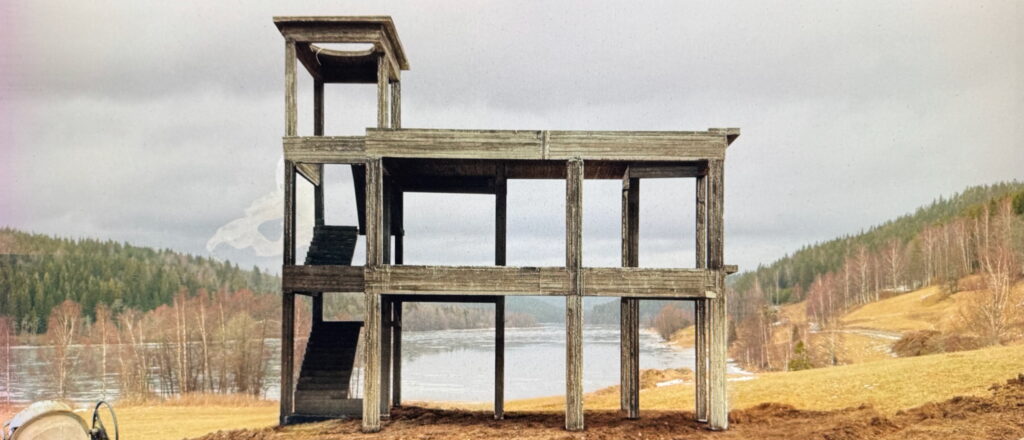
Of note, this is very long for a horror movie. Over 2.5 hours. Probably could have used a heavy-handed editor and would have been a fine flick without the Inferno metatext and frequent digressions into William Blake, Albert Speer, and others, but I don’t fault its ambition and it does not bore. Of note, there’s brief but very hard-to-watch animal cruelty in one flashback. (It’s CGI, but still.)
A poll from a few years ago found that 64% of people surveyed prefer to watch horror at home rather than in a theater. For movies of all genres the percentage of people who prefer to watch at home drops to 55%. Of course the theater is a different experience entirely (immersive visuals, superior sound, communal experience), but maybe the 9% point difference is meaningful. Maybe there’s something about being scared in the comfort and safety of your house which adds to the allure of horror movies. Is it possible that for that 90 minutes we enjoy living in our very own haunted house?
OK tourists, I hope you enjoyed our excursion today. Time to go home. May I suggest putting on a scary movie?
A full list of the movies mentioned above can be found at Letterboxd. Find out where to watch there.
The Terror Tourist is my occasional segment on the Heavy Leather Horror Show, a weekly podcast about all things horror out of Salem, Massachusetts. These segments are also available as an email newsletter. Sign up here, if interested. Here’s the episode containing “Pied-à-Terror”:
Mission Elapsed Time: 20:00:21:06:42:40
This month both my personal blog, Ascent Stage, and my Flickr account turn 20 years old.
I’ve gone back through all of it — 862 posts, 30,558 photos. Other than endemic linkrot, an unfortunate smattering of Flash-based content, and services whose embed functions have crapped out (looking at you Flickr video, YouTube, and Google Maps), it has been a very pleasant journey through two decades of me. What follows are some thoughts on the evolution of the site, interspersed with my twelve most viewed (publicly-accessible) Flickr photos from the past two decades. (Here’s the 10,000th photo posted and, very recently, the 30,000th.)

#12 From the first hackathon the City of Chicago orchestrated around our open data initiative in 2011. I had just started as the city’s first Chief Technology Officer.
Since 1996 I had maintained a personal website called, pretentiously, hypertext :: renaissance. This site had no content management system — definitely not what would come to be called a blog — all hand-coded with table-based layouts, frames, and hacks. It was a beautiful mess, all mine, and visited by precisely no one. I loved it. Many rough years passed with browser-specific HTML atrocities, cgi-bin Perl scripts, and transparent single pixel GIFs. But help was on the way: personal blogging software. As a former grad student studying the English Renaissance how could I not jump onto a platform called Movable Type?
But we’re starting in 2004. Google had just introduced Gmail. Flickr was launched as a social photo service built on the corpse of an MMO gaming platform called Game Neverending. The social bookmarking site del.icio.us was in its pre-acquisition heyday. Feedburner brought the first bit of Web 2.0 cred to the Chicago tech scene. Javascript was having its moment with the Ajax framework. Mozilla’s Firefox 1.0 browser was attempting to cut into Microsoft’s then-95% share of the browser market with IE. MySpace had just passed 1 million users. Facebook had only just been created in a Harvard dorm room. Twitter was two years in the future. The iPhone, three years. My wife and I had two kids under the age of three. I decided to start blogging.

#11 One of the last things I did at IBM was serve as a contestant on the actual Jeopardy soundstage to compete against our latest AI, called Watson. I bested it on a single question. +1 for meatbag intelligence.
I have always loved writing and tinkering with software. And with a debilitatingly broad curiosity that has led me into countless hobbies, projects, and side quests blogging was a perfect outlet. But more than that, blogging itself seemed like fulfillment of the promise of the still relatively new web — the democratization of publication. So much more than the hobbyist/nerd niche websites of the late 90s, weblogs were full platforms to let anyone anywhere communicate in a relatively non-amateur way. Even better, as this was before the coming of fully hosted blogs, spinning up your own meant doing it outside any big corporation’s monetization imperative or walled gardens. This was the second coming of Gutenberg, at least to young me who liked writing about such things.
I got the platform up and running but the site needed a name. I wanted something hopeful, forward-looking, and ever-so-slightly nerdy. As a spaceflight dork I chose Ascent Stage, the piece of the rocket that goes up. (Eventually I had to explain this. And yes I do also own descentstage.com. I’ve often considered crafting an anti-hero version of me there.) First post: Oct. 1, 2004 about my best buddy Matt’s art show. (And he’s still making beautiful things, 20 years on.)

#10 View of the extinct volcano Mount Vulture from one of the three trips I’ve made back to my ancestral village Barile in Basilicata, Italy including once to be made an honorary citizen.
Reading back through everything some patterns come through almost immediately. Many posts were very short, 2-3 sentence observations or comments on links. It was a need for something like Twitter several years before that service was launched. I even experimented with something I called microposts, basically manual snippets in the blog margin. What doomed these is that they were never integrated chronologically with main site posts or in the main RSS feed. Twitter solved this particular problem, but it created quite another. My blog posting rate dropped off a cliff in the early years of Twitter, but, given the service’s 140 character limit (which was delightful), the length of individual blog posts expanded greatly.

Microposts failed but the marginalia survived and continues to this day. It’s a persistent collection of featured site sections, latest public photos from Flickr, interesting links (powered today by Pocket, but formerly pulled from del.icio.us), and books I have recently read (pulled from LibraryThing). In some ways the margin is the oldest section of the site, at least in concept. It’s a throwback to a time when open, interoperable, embeddable web functionality was everywhere. A web made of many pieces loosely joined. Being distributed these pieces have broken many times through the years, but that’s the thing about a garden without walls: there are always new plants to find further afield.
Many posts in the early years were lists of favorite things like links, gadgets and software — most of which no longer exist, given the pace of technological change and startup frailty. And yet the reminders of what caught my fancy — such as what my backpack carried on international trips — have some historical and emotional value.
And speaking of the latter, one early topic category called The Darnedest Things (and a broader one called Kids) was a running diary of observations on parenting two and then three small children. My kids are only just now discovering these snapshots with equal parts fascination and horror. Like finding a lost diary.
Hurricane Katrina was a catastrophe for many, including my extended family. In an era before widespread social media Ascent Stage was a collection point for information as my wife’s grandparents fled coastal Mississippi. Eventually it was where our family could see that their house was destroyed.

#8 One of my many pandemic lockdown projects, the coral brickscape taught me how difficult it was to build a squishy, curvaceous reef out of hard plastic 90° angles. It also got me an (unsuccessful) audition for Lego Masters.
Oh the music nerdery! These were the early years of MP3 files and online music stores, mostly pre-streaming. Having already ripped my entire CD collection to digital I was prepared for the onslaught of music organization, visualization and analysis tools that came about in the early years of the millennium. Hoo boy, I had some fun:
- The Mashability Index — an attempt at visualizing the most mashed-together artists from thousands of songs.
- Evolving my music genome — an attempt at using Apple’s Genius music recommendation algorithm to cross-reference its output recursively, highlighting duplicate tracks. This, I posited, would ultimately generate a playlist where my musical interests overlapped, each track of which being a root node for all the music that I have come to love moving forward from that point. It sorta worked.
- Culinary turntablism — using a traditional Chinese rotating food serving platter and the dishes placed upon it like a player piano roll. You should have seen the incredulity of my colleagues in Beijing over the course of a multi-hour meal as I assiduously noted when dishes were added and removed to the rotation and how many revolutions they made.
I dabbled in short album reviews on the blog, but mostly used it to distribute novelty remixes (like this one, danger!) and what I called giftmixes (like this one from 2011), lightly-mixed continuous collections of tracks for friends. These were also the days of my participation in the DJ collective known as Beat Research Chicago with Jake Trusell and Jesse Kriss. Such fun as we lit it up at Villain’s in the South Loop for a few months. Music was also a huge part of a series of bonkers holiday parties thrown by my wife and I. With a custom-built DJ booth, handmade electroluminescent jackets, and a steady stream of Chicago police officers demanding we turn it down the three final parties called Out of This World, Around the World, and The End of the World became legendary. I sure do miss those electroluminescent jackets.

#7 The popularity of this photo is what happens when Flickr features it on their Explore page. But I love the picture for how the building’s floating truss echoes the L track substructure. Chicago Loop, Washington and Wells, looking west.
Like any good blogger I wrote a lot about food, but very specifically about recipes and experiments in Southern Italian cuisine, relatively unloved in the USA. It was cooking as ancestor worship, basically. These were also the years of winemaking and brewing as well. Of course I had to do it the hard way, ginning up everything from colonial-era Applejack and wine from wild-picked raspberries to an Irish red ale in memoriam.
And then there was work blogging. The lion’s share of posts on Ascent Stage to date were written while I worked for IBM. Most of my time there was spent working on cultural heritage and related projects in Russia, Egypt, China, Ghana and dozens of other far-flung locales for shorter durations. These were the most formative years of my early career and the fact that I wrote about them at such length, naively in some cases but always with extreme curiosity and wonderment, brings me immeasurable joy. We got not one but two History Channel documentaries out of this work, not a single pixel of which seems to remain available anywhere on the Internet. I do know that Omar Sharif said my name in one of these, but you’ll have to take my word on that.

#6 An exploration of the former freight delivery tunnels below every street in Chicago’s downtown. The whole thing flooded when it was punctured accidentally beneath the Chicago River in 1992.
Then there was the brief but intense dalliance my colleagues and I took in virtual worlds, like Second Life, as we were researching technologies for our work in China. This roller coaster seemed to stop abruptly … and yet given the current fascination with AR and VR headsets and open world gaming these days it seems pretty clear that we were way out in front of the technology back then. What’s old is new. No more so than with AI. The blog documents one of my favorite memories at IBM at the very end of my time there in 2011: serving as a human test contestant while training the AI supercomputer called Watson as it prepared to compete on the game show Jeopardy. I beat the AI on one question. A single question.
I left IBM in 2011 which corresponds pretty precisely with the end of frequent posting on Ascent Stage — but the writing that did happen got longer and in some ways more serious. The reduction in posting is likely not that I had more time to write while working for IBM but because I had so many more outlets in my new role as Chief Technology Officer for the City of Chicago. Also, my travel during this time fell to nearly zero. And then of course there were the continuing effects of microblogging via Twitter.

#5 I spent much of the summer of 2018 in Ghana, Africa as part of IBM’s Corporate Service Corps working with a group called Aid to Artisans. Here’s a classic dish of tilapia and banku (fermented corn meal).
My professional and intellectual focus at this point was primarily on urban design and technology. Even before I joined the mayor’s team, Ascent Stage had become an outlet for exploring the intersection of data, especially open data, and the experience of life in cities using Chicago as a platform. Here are some highlights:
- Our second city — an essay I was asked to write by WBEZ in Chicago and which, in retrospect, seems like the beginning of my deep thinking on cities and technology. A favorite.
- Lessons from unmaking urban mistakes — wherein I extract six examples from the past to guide us as we explore a future of networked urbanism. Holds up.
- What the public way means in the networked age — an ode to the sidewalk as the original social network.
- When tech culture and urbanism collide — still not sure we’ve learned to be skeptical about urban solutions coming out of Silicon Valley, a giant suburb literally built around the cult of the garage.
- City of Big Data — another career highlight participating in the curation of an exhibit at the Chicago Architecture Foundation (now Chicago Architecture Center), weaving my prior museum work into current interests.
- What we talk about when we talk about smart cities — one of the last in-depth treatments I gave to this subject before it moved to the saner side of the hype curve.

#4 One of my great loves/labors is a 300+ gallon saltwater reef aquarium. Here is bubble coral (Plerogyra sinuosa), which took me years to figure out how to keep alive. (Still going!)
But really Ascent Stage has been the most fun when it was just cataloging the odd and the interesting, even when I didn’t realize it at the time. Here’s a selection:
Turns out not 20 days into even having a blog in 2004 I made an aside about my dislike for Donald J. Trump. (This hasn’t changed.) He tore down the Sun-Times building which, admittedly, was an unlovable eyesore on the Chicago River, right outside my window next door at IBM Plaza. We documented the whole thing and created a timelapse video, which I believe is my most watched video on YouTube. The refrain “there’s beauty in the breakdown” of the track we set the video to, “Let Go” by Frou Frou, hits differently these many years later living with the other things Trump has wrecked.
My friend Len introduced me to sensory deprivation tanks, something I enjoy to this day as a vehicle for relaxation and meditation. That in itself wouldn’t be very interesting except that the local ABC news affiliate did a story on it. Their spin? Harried working dad uses sensory deprivation to deal with stress. My wife was having none of it. But I was not done with the tanks. Through a series of experiments I brought a waterproofed iPad nano and heart rate monitor into the chambers to document taking all the senses away but one. Altered States it wasn’t. Scientific it wasn’t. But, hey, I was dealing with stress.

#3 Another pandemic project, this is my modification of the Lego Police Station with a Black Lives Matter protest out front.
It’s tough to choose a favorite moment on the blog over twenty years, but the back-and-forth it prompted with my favorite novelist, Richard Powers, winner of the 2019 Pulitzer Prize for Fiction, has got to be close to the top. I had mentioned Powers early on in a post which prompted a reply in a now-defunct electronic literature forum. But it was in 2007 that I directly called him out for a claim that his then-latest novel, The Echo Maker, was written completely by dictation using text-to-speech software. He replied, convincingly and humorously. This was the essence of the early web, nailing a note to tree in a dense forest of websites and having it be found (by someone famous, no less). I’m sure this still happens via social media, but the direct access it seemed one had to experts of all kinds in the early days of the web still seems magical to me.
Lego bricks occupy a lot of space on this blog. And in my house. And in my life. Building crazy things got me through the pandemic lockdown (and an audition on Lego Masters, twice), but well before then it was the launchpad for a small business with my two young sons. When our first child was born I used some paternity leave time to convert his photo into a grayscale mosaic and then posted a how-to. This got picked up somewhat widely around the web and eventually led to our establishing a service to do it for others, called The Brick Brothers. We received a letter from the Lego Corporation, which I thought would be the boys’ introduction to the concept of cease-and-desist, but which was in reality a congratulations. I couldn’t love those Danes more.

#2 This photo-within-a-photo at the northwest corner of the intersection of Dakin and Sheridan in Chicago depicts my grandfather, father, and uncle sometime in the late 1940s. I returned a few times with my family to recreate it.
Pretty sure this blog earned me honorary citizenship in Italy. I had been writing about my Italian heritage for a few years, having studied there in 1993 and learning about the spectacular and relatively-undiscovered province of Basilicata, the region from which my family hails. It began with the help of Ancestry.com as my kids and I traipsed all over Chicago locating graves and places from old photographs. Some folks in Basilicata noticed and eventually invited me to come to Barile, the town of my great-grandparents, as their guest. It was an odyssey I will never forget in no small part because of the rarity of serving as a tour guide for my aging parents. Bringing it back home I wrote 1903, a piece of speculative fiction and genealogical detective tale that is easily one of my favorite posts.
Going back through two decades of cultivating this weedy garden, I’m reminded of seeds planted way back when that flower today. As early as 2009 my interest in restoring ecosystems is evident which today manifests as a broad study of how complex systems (like dinosaurs and towns) fail. And it’s probably why you’ll find more recent posts about underwater exploration and coral reefs, including a fundraiser I launched for Marhaver Lab in 2022. The last two years of Ascent Stage have been dominated by long-form, multi-part adventures. Last year my daughter, niece, dog, and I embarked on an epic multi-state tour of the American West in a jalopy camper trailer hauled by an electric vehicle. This was an extraordinary trip in many ways, not the least of which was being able to document how to actually do it logistically. This year’s adventure has mostly been about horror — cancer, sure, but really horror movies. Starting with a Zombiefest in 2008 through lockdown binge-watching horror has long been a theme explored in these posts. This year most of the pixels spilled here have been devoted to deep dives into the places in these movies, specifically a segment called The Terror Tourist which I contribute to a podcast out of Salem, Massachusetts called the Heavy Leather Horror Show.

#1 Turns out my most viewed photo is a flagrant copyright violation. After watching 2004’s I, Robot I wrote about where I thought the CGI buildings were placed. Nerds loved it.
So that’s it. That’s 20 years of self-publishing. It’s possible that one day blogs will be seen as a period-specific format, much like silent films are to the early 20th century. I hope not, of course, as their personality and authenticity seem ever more important as the web fills with AI-generated slop curated by corporations inimical to the hyperlink.
Like anything online the picture this blog paints of me is incomplete at best, an artifice of persona at worst. But it is me. I’ve detailed many highs in the posts and photos linked here, but the blog also documents some low points — let’s call them bumpy landings before I ascended again. On this eve of a new life phase which will surely have its share of mission calamities, I’m glad for it all. Here’s to many more orbits.
_________________
End transmission.














